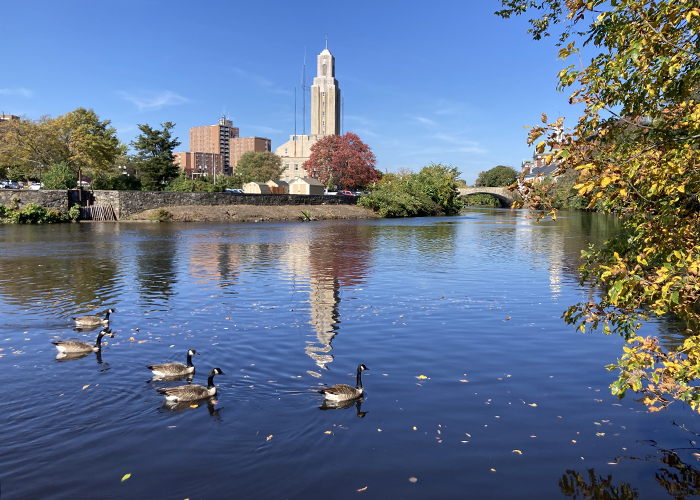 Previous Day |
Waltham, MA → Providence, RI → Waltham, MA 125.0 mi (201.2 km) |
 Next Day |
I’m on a path to Providence, everyone!
Providence, as you may well know, is the capital of America’s smallest state: Rhode Island, and today I’m questing for two national park sites in this tiny state (48 by 37 miles)! The morning started off very foggily with mist wrapping around the Ocean State’s 1904 state house, which boasts one of the world’s largest, self-supported marble domes!
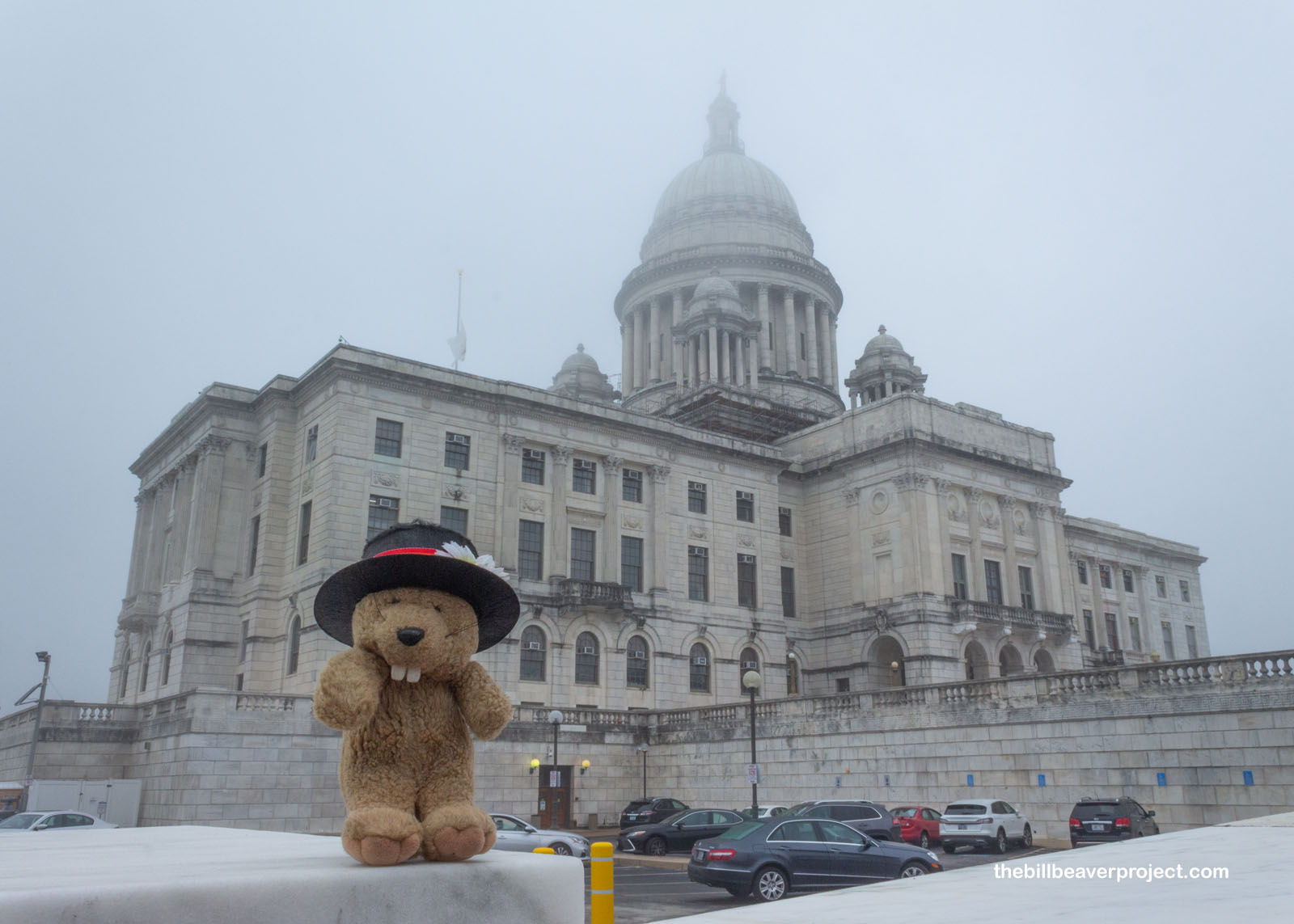 |
The Rhode Island state house sat kitty-corner to my first national park site of the day: Roger Williams National Memorial. This humble park didn’t look like much at first glance, but it’s probably the most significant patch of grass in Rhode Island’s history! After all, this is where Roger Williams, fleeing Puritan persecution, settled in 1636 on land gifted to him by Narragansett leader, Canonicus. Here, he created Providence Plantations, a refuge for those seeking religious freedom!
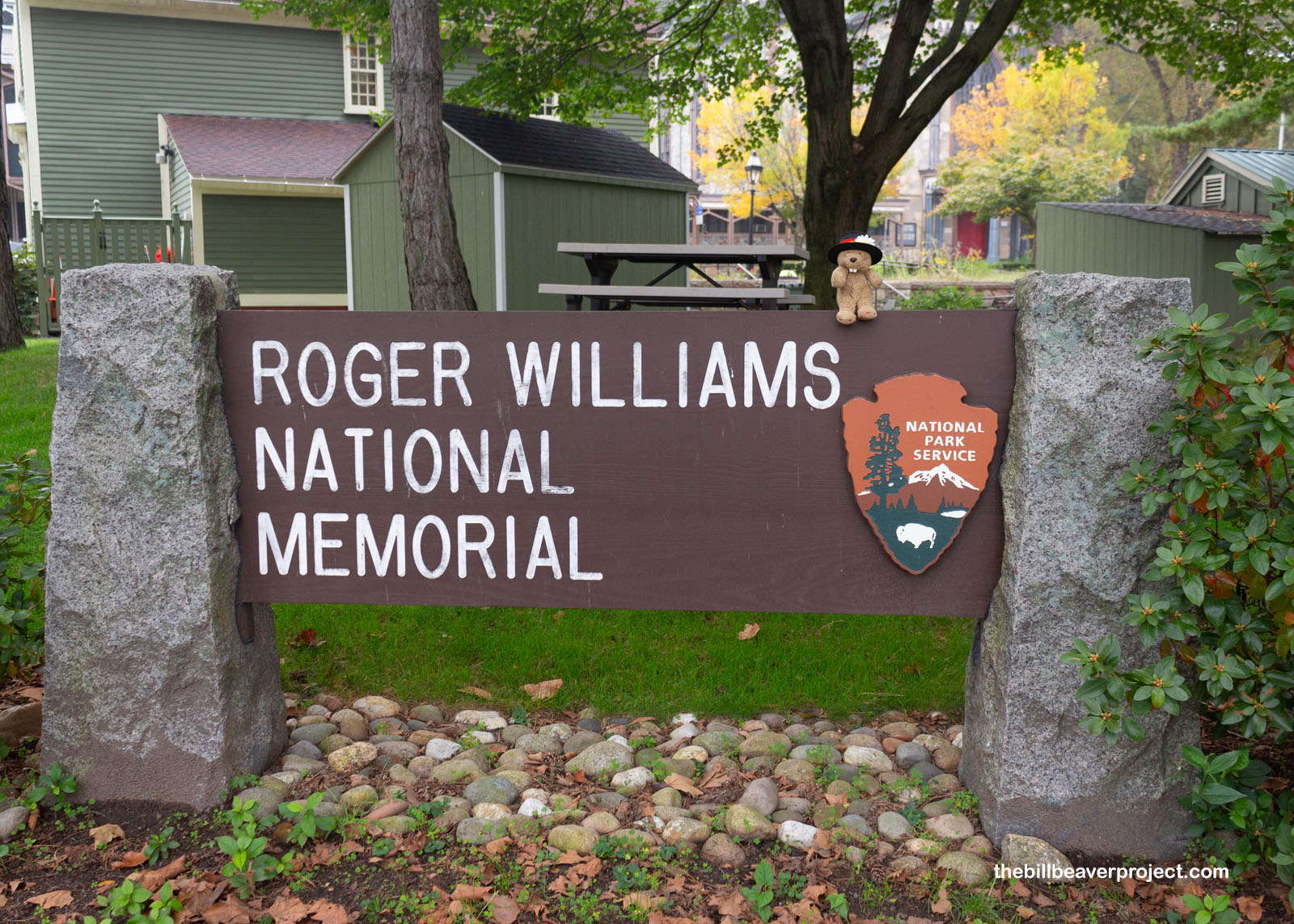 |
Today, a well marks the freshwater spring where Mr. Williams and his followers settled, and from the start, its waters were meant to be shared by everyone, even after the land sold to a private owner in 1721. This was just one piece of the “livelie experiment,” that encouraged inclusion (of Jews, of Muslims, of Native Americans, etc.) rather than exclusion!
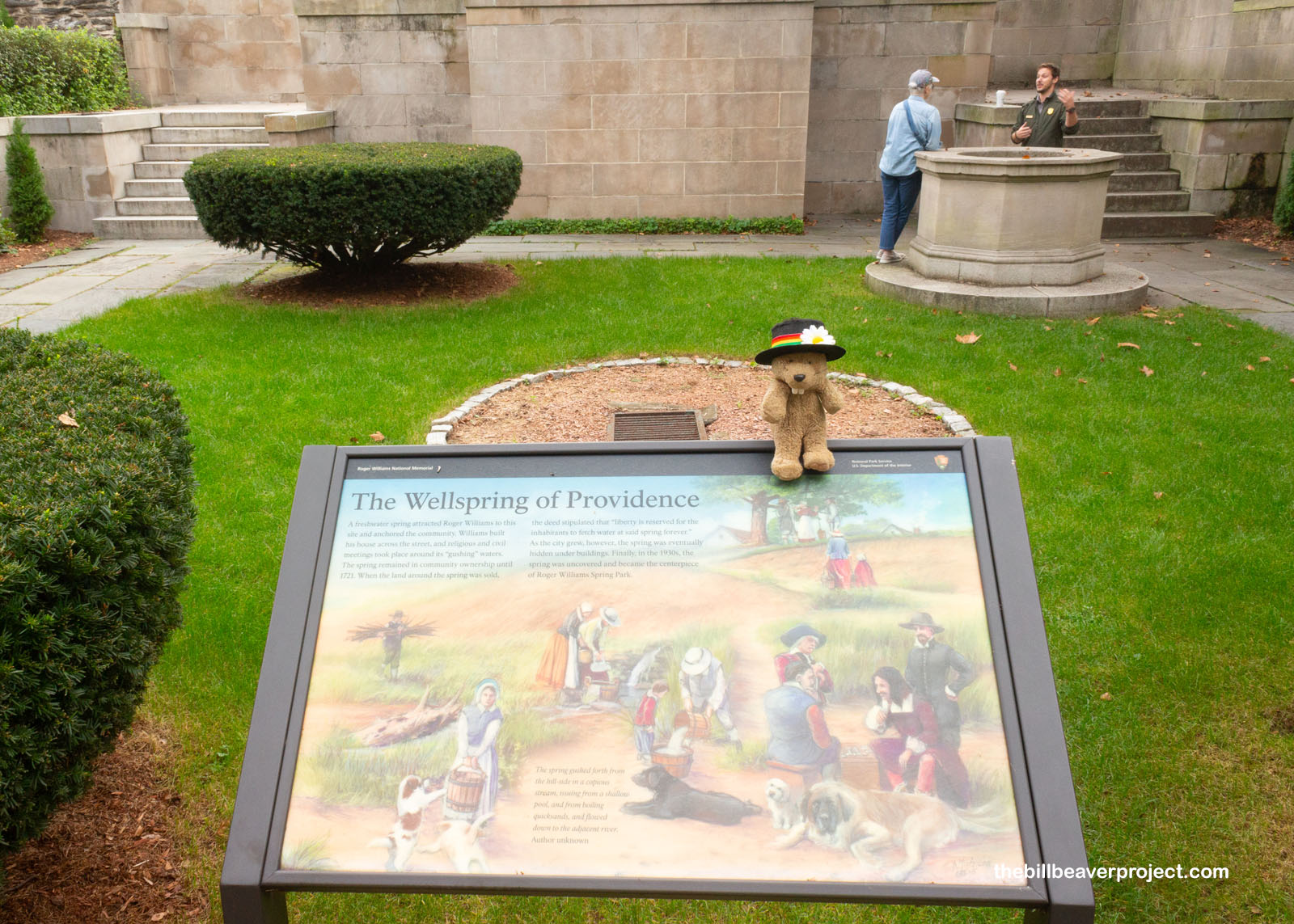 |
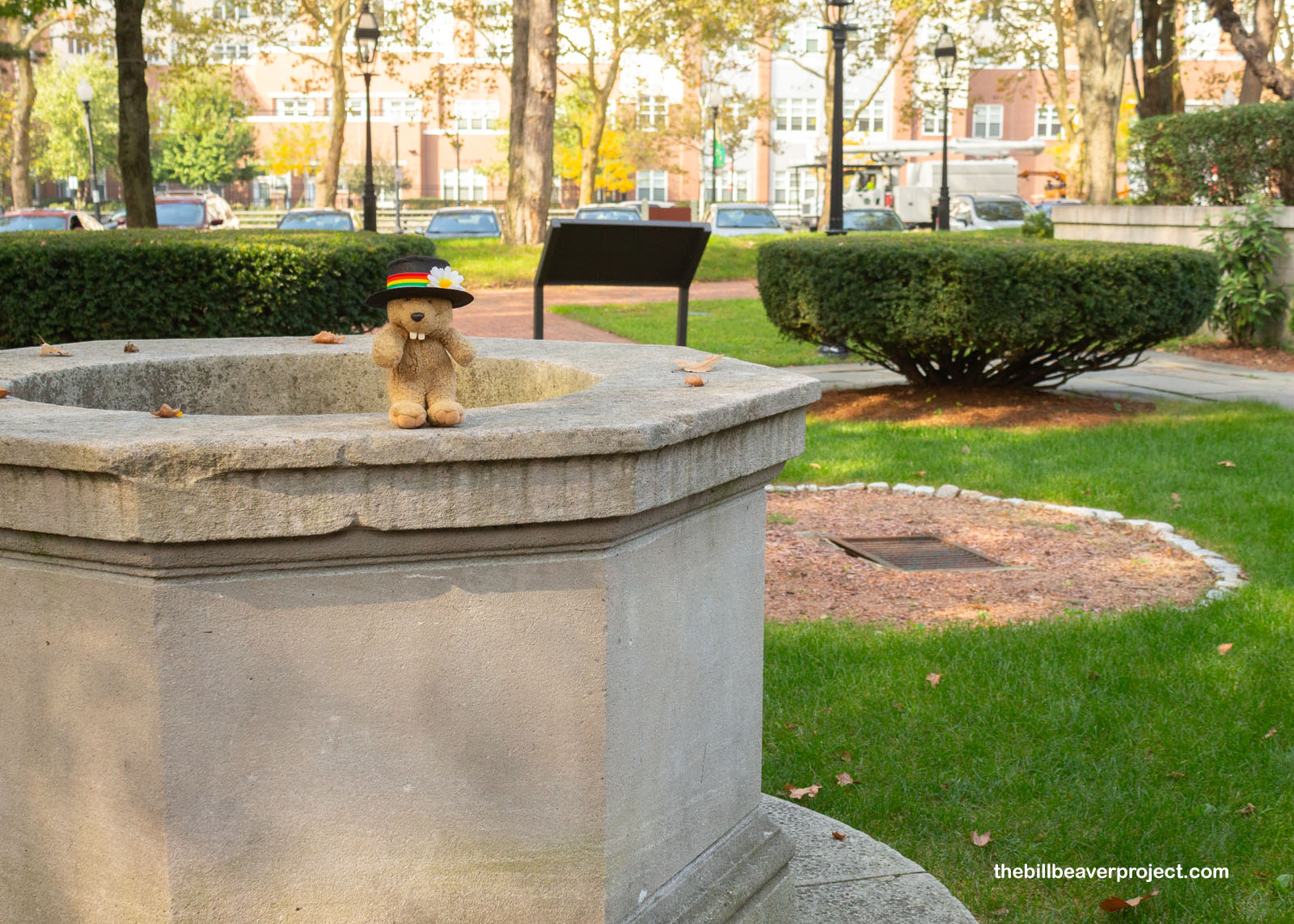 |
One such person was Isaac Hahn, who moved here much later, in 1870, but is memorialized next to the well. The first Jewish person elected to state office in Rhode Island, he started off as a shopkeeper and manufacturer here in Providence but aided his community in fundraising for a synagogue and supporting Jewish immigrants who had successfully escaped persecution in Eastern Europe and reached the land of Providence!
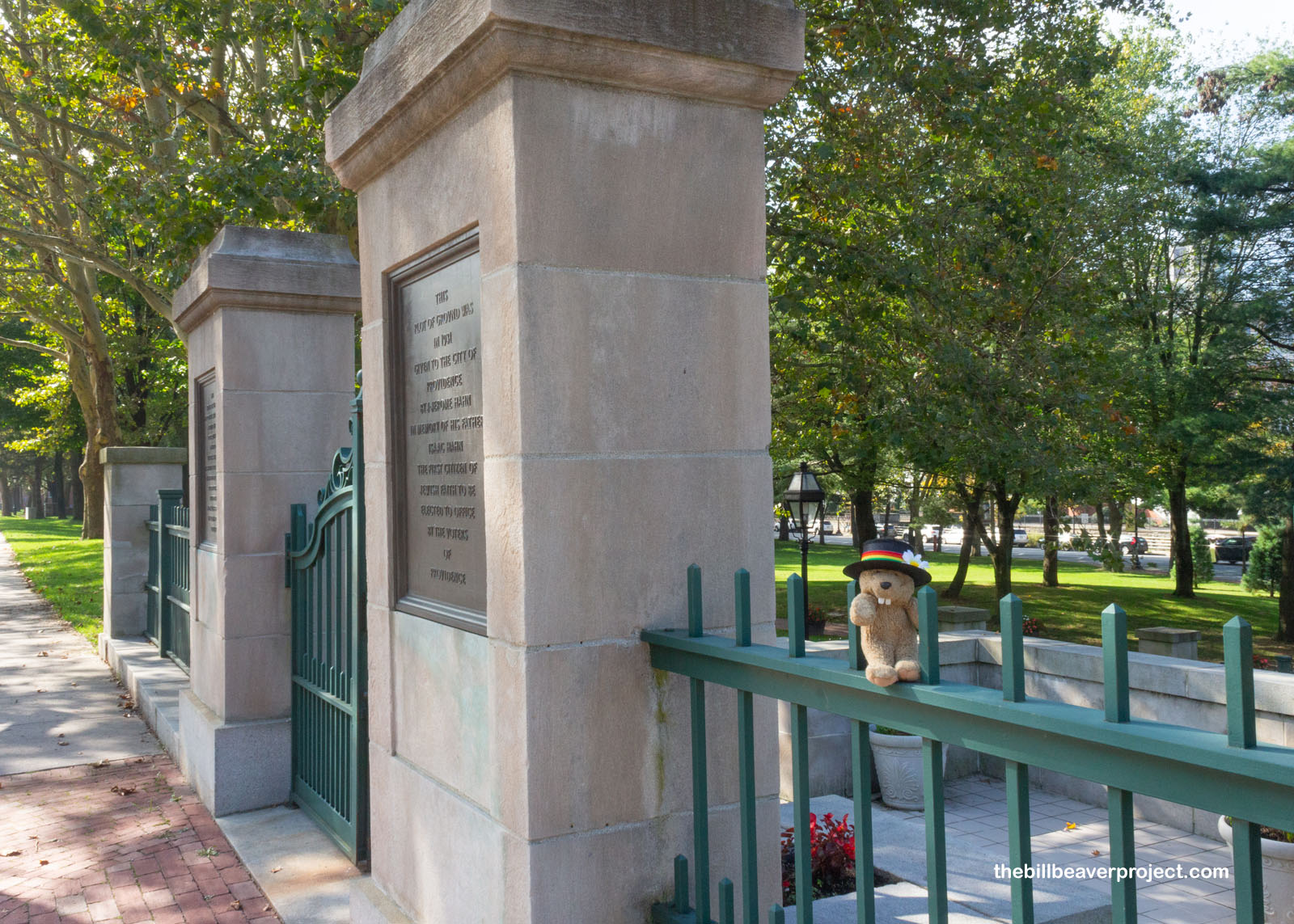 |
Not much still exists of the settlements around this park and spring, but Roger Williams National Memorial is still home to Providence’s oldest commercial building, the Antram-Gray House, built as the distillery of William Antram in 1730! It was here as the Revolutionary War made Providence the most important commercial city in Rhode Island and when the city incorporated in 1832. Today, it’s home to the memorial’s visitor center!
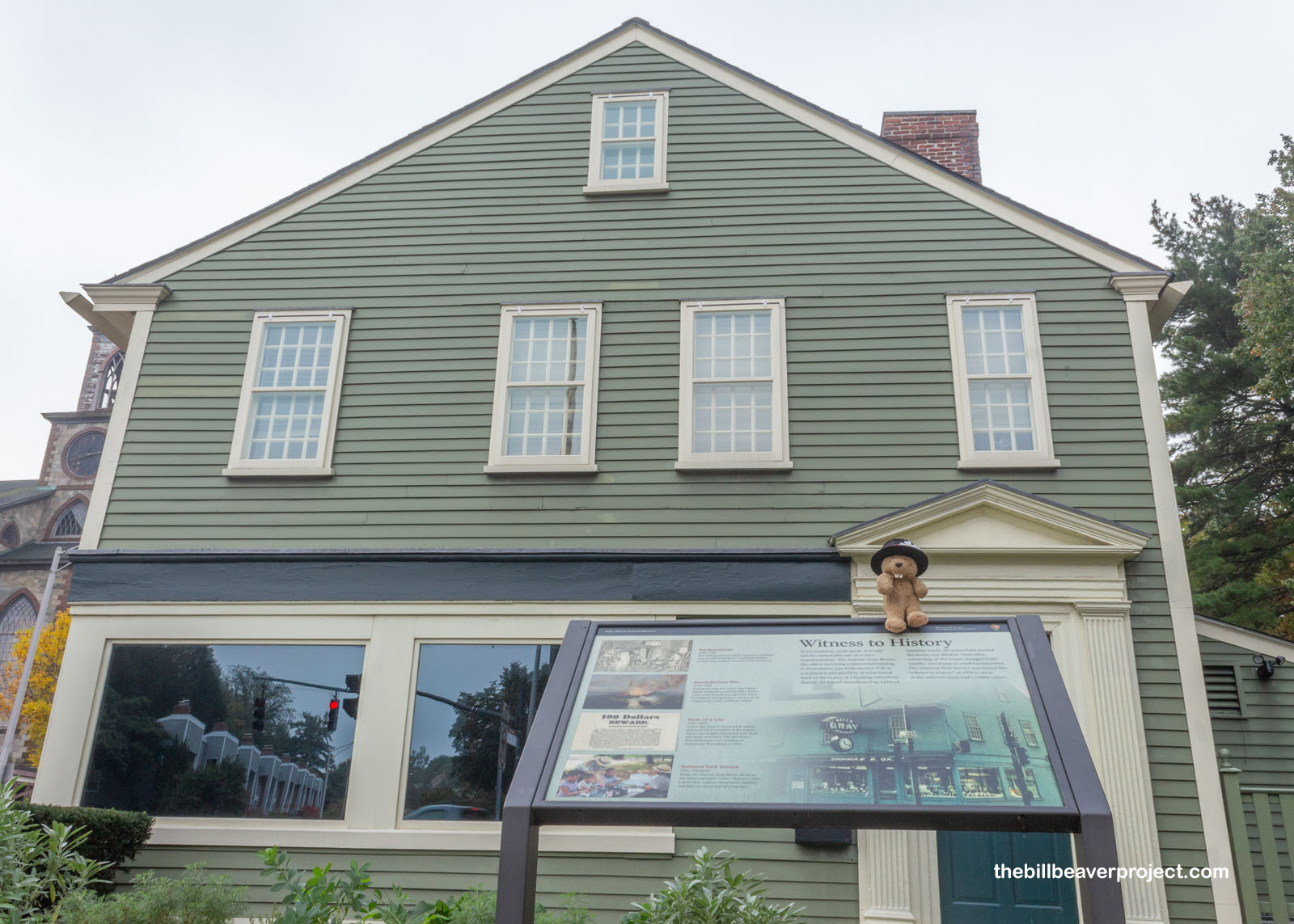 |
As far as national parks go, this petit park had more memories than monuments, but it was well worth a stroll. There were art students set up with canvases all along the walkways, painting the surrounding trees and squirrels, and I thought that really embodied Providence’s peaceful foundation. It was a place to relax, reflect, and be at ease… but I still had lots to see and hoofed it uphill!
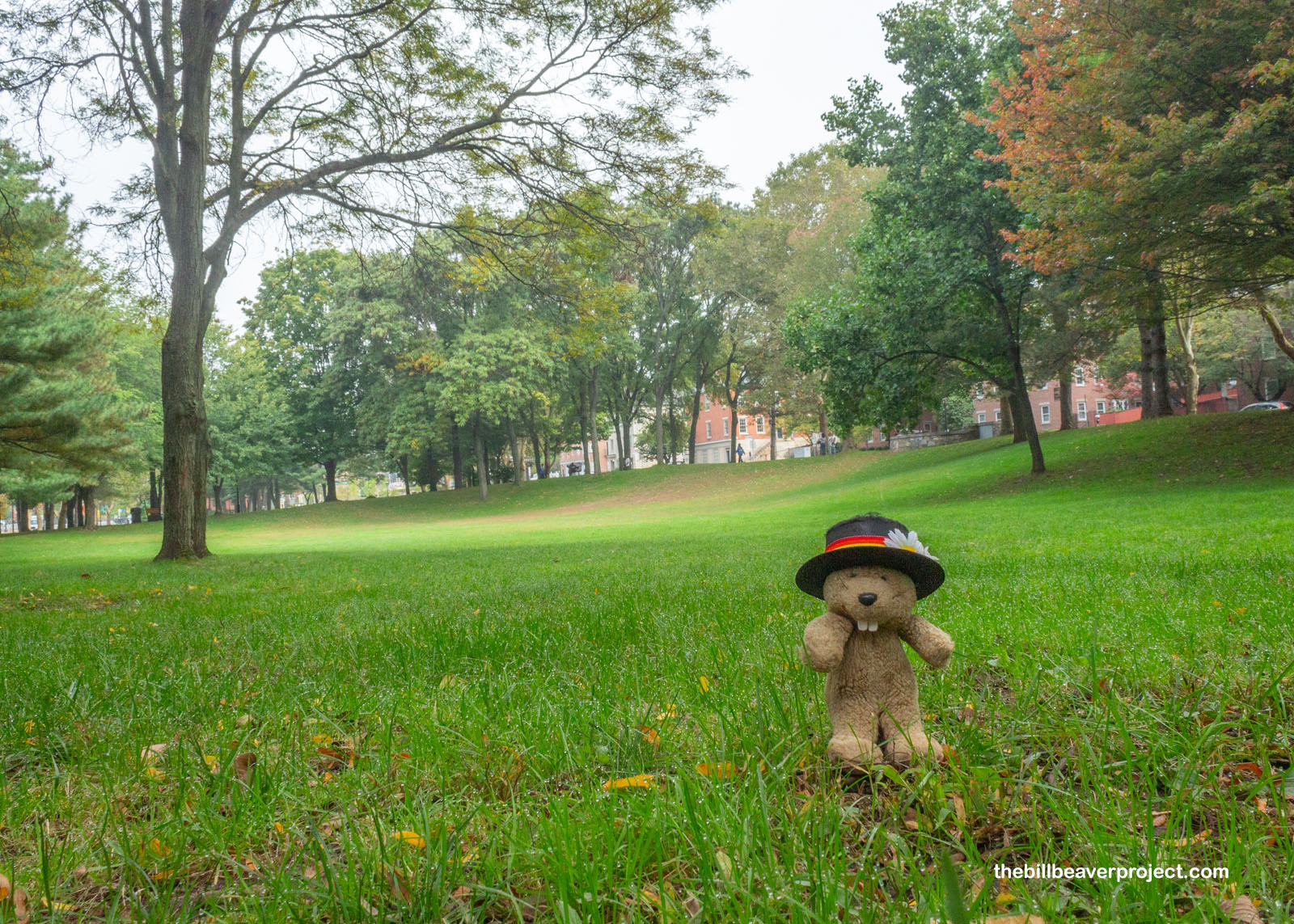 |
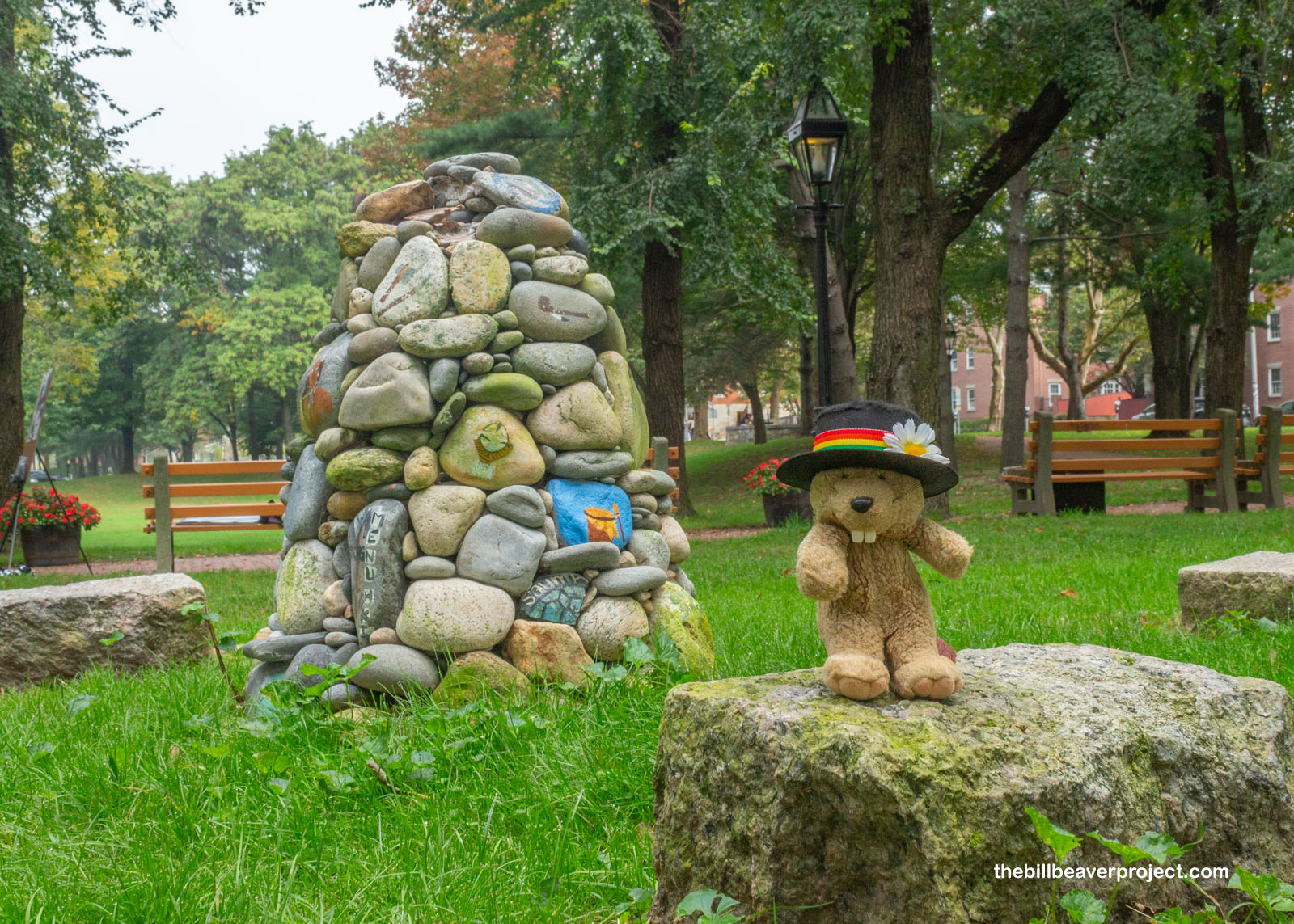 |
That’s where I beheld Rhode Island’s old state house, one of only six surviving state houses in the USA that date back to colonial times! Three of those state houses are in Rhode Island alone! This was the site of some very important moments in US History. For instance, here on May 4, 1776, Rhode Island led the other colonies in renouncing loyalty to Britain! In this Georgian-style building, the legislature removed voting restrictions for Roman Catholics in 1783, passed an act emancipating slaves in 1784, and even abolished the death penalty in 1852! By 1901, the legislature moved to the new state house with the huge dome, and this one became the Sixth District Court.
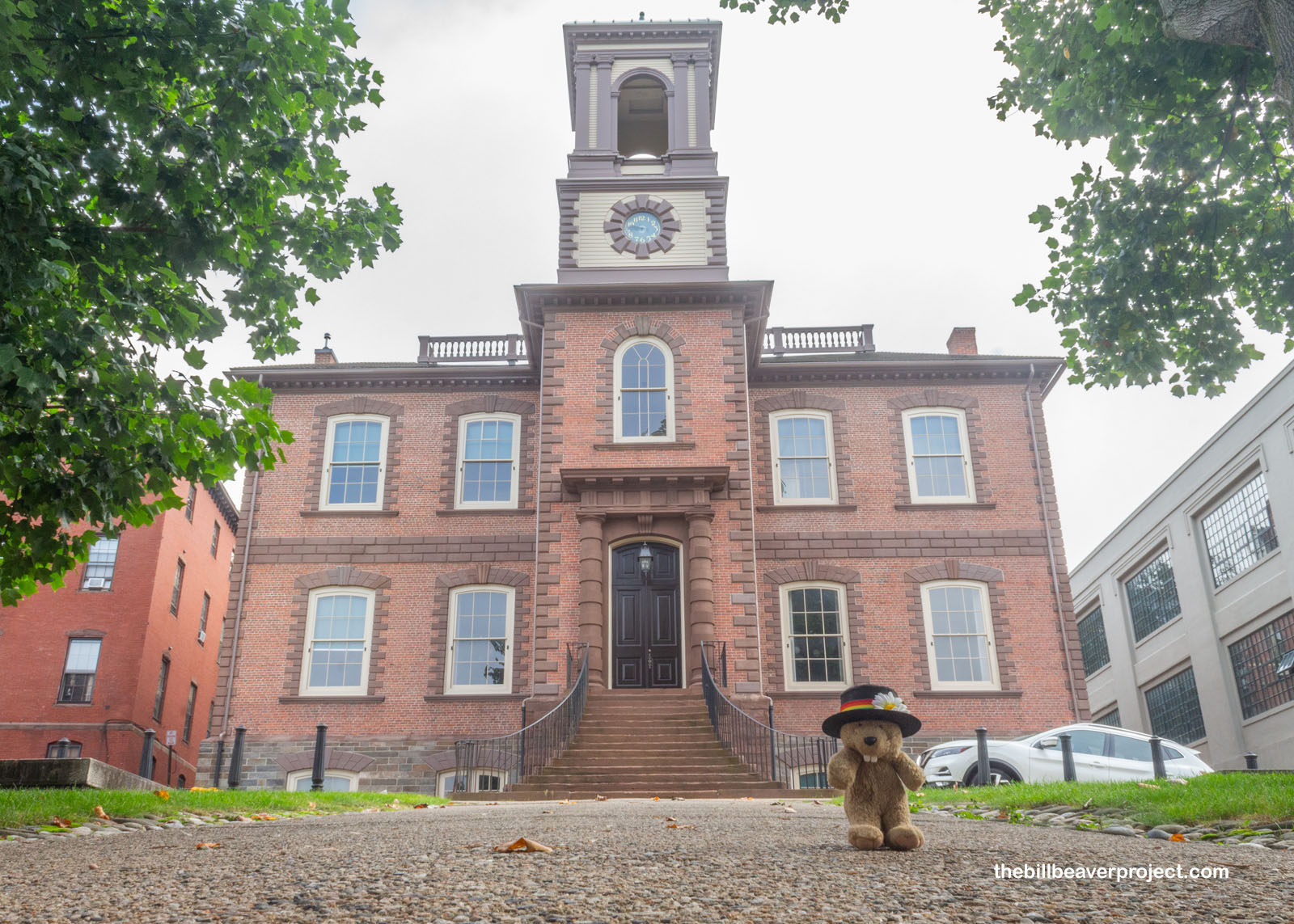 |
The neighborhoods west of Roger Williams National Memorial were full of history as well. For instance, in this humble house, horror writer, H.P. Lovecraft, rented a room from Samuel B. Mumford. It was this house he used as a setting for The Haunter of the Dark, in which his main character, Robert Blake, accidentally summons an ancient evil into the dark reaches of an abandoned tower, which escapes and finds him during a power outage! Sadly, this would be his last short story, because only two years later, the writer’s own horror, intestinal cancer, put a sudden end to a career that only really got recognized after his passing.
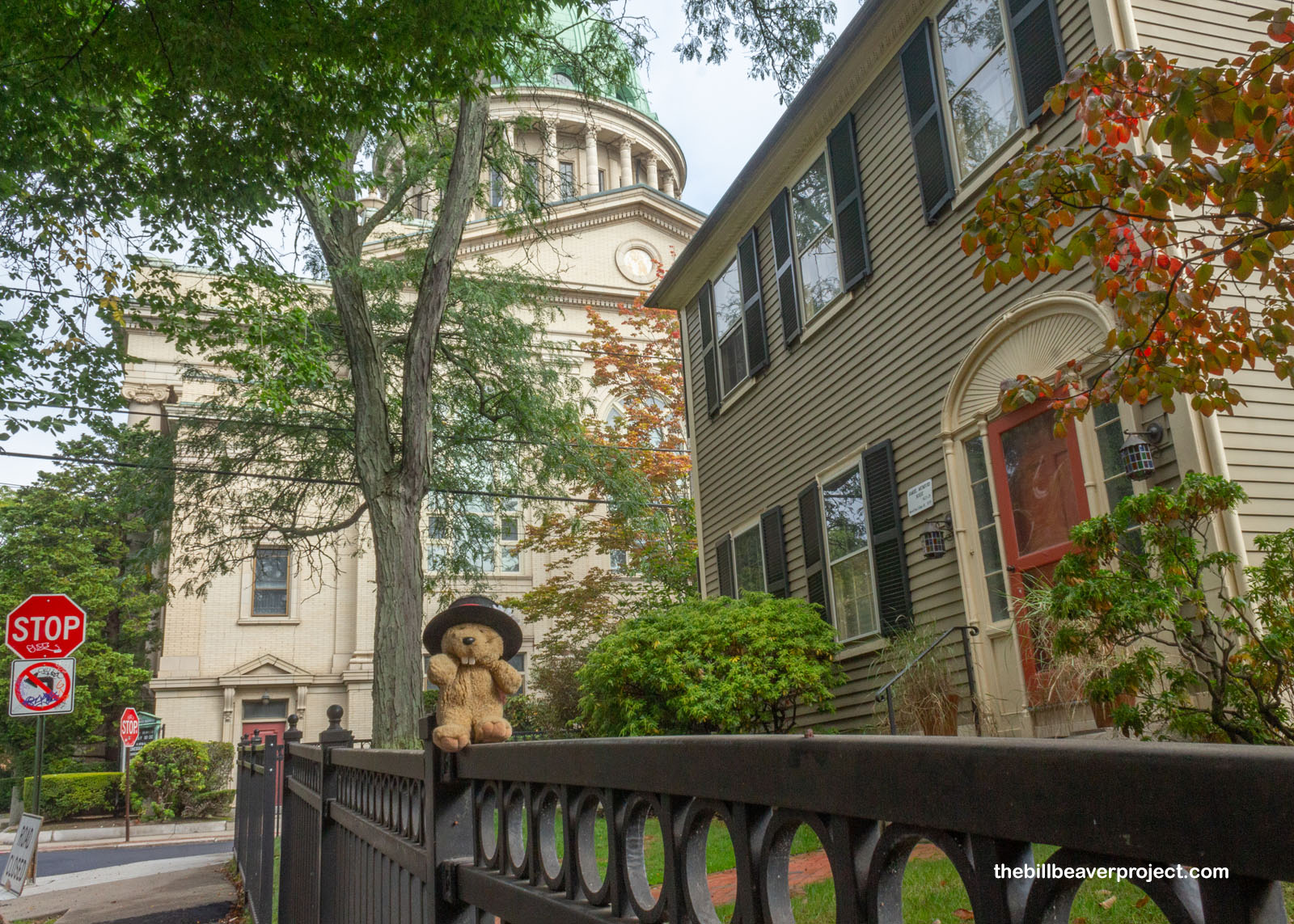 |
He’d roomed next to America’s First Baptist Church, founded by Roger Williams in 1638 but with this building dating back to 1775! At the center of Baptist belief was that only a believer could properly be baptized, so that ritual happened later in life when folks could make their own decisions about that. The current building went up under the leadership of James Manning, during a period known as the Great Awakening!
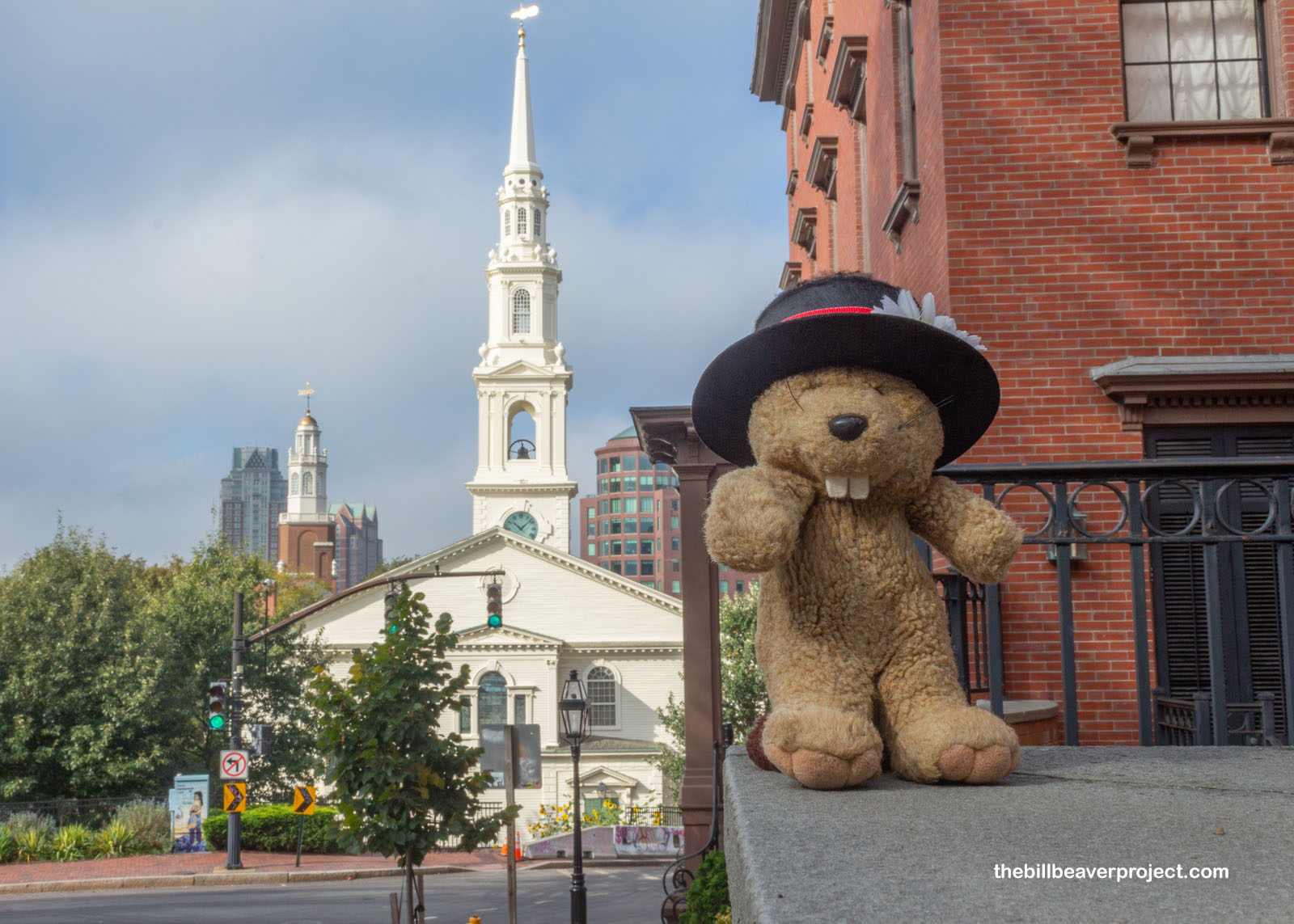 |
And this meeting house was far from the only remarkable architecture in Providence’s College Hill neighborhood. Why, just across the street was the Fleur-de-lys Building, designed by Sydney Burleigh and Edmund R. Willson, and later home to the Providence Art Club! In this two-and-a-half story building, adorned by representations of Sculpture, Painting, and Architecture, lived the main character of H.P. Lovecraft’s most famous story, The Call of Cthulhu!
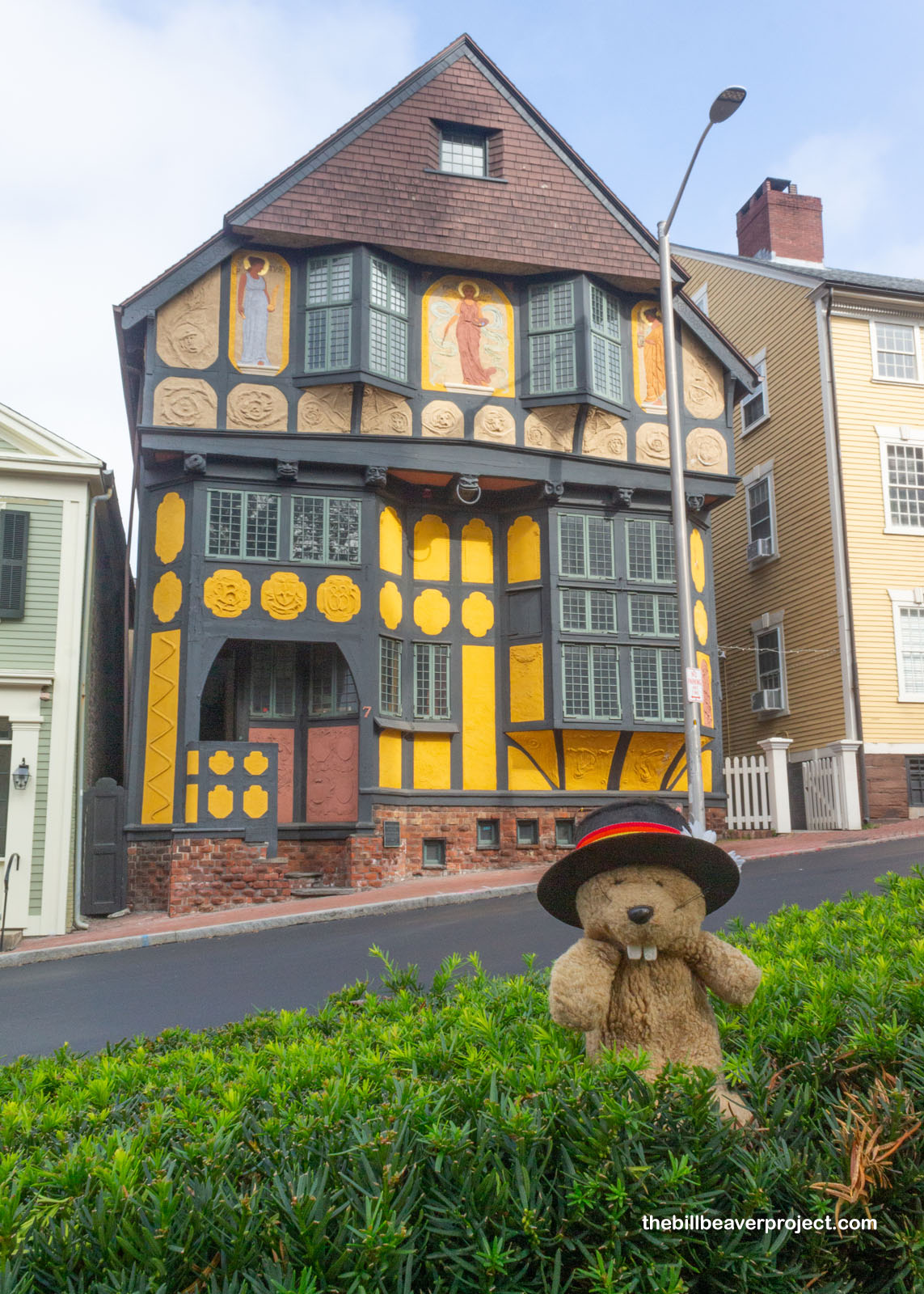 |
By this time, the morning gloom had cleared, and the sun was shining. I migrated my way south toward Brown University, established by Nicholas, Joseph, Moses, and John Brown in 1764 and situated on the Brown family estate. John Brown’s mansion is still standing as a museum south of campus, but make no mistake: this was not the abolitionist John Brown. Though he was a leader of the Sons of Liberty, he was also a committed slave trader and fiery anti-abolitionist, the first to be prosecuted under the Slave Trade Act of 1794, which led to the confiscation of his ship, ironically called Hope!
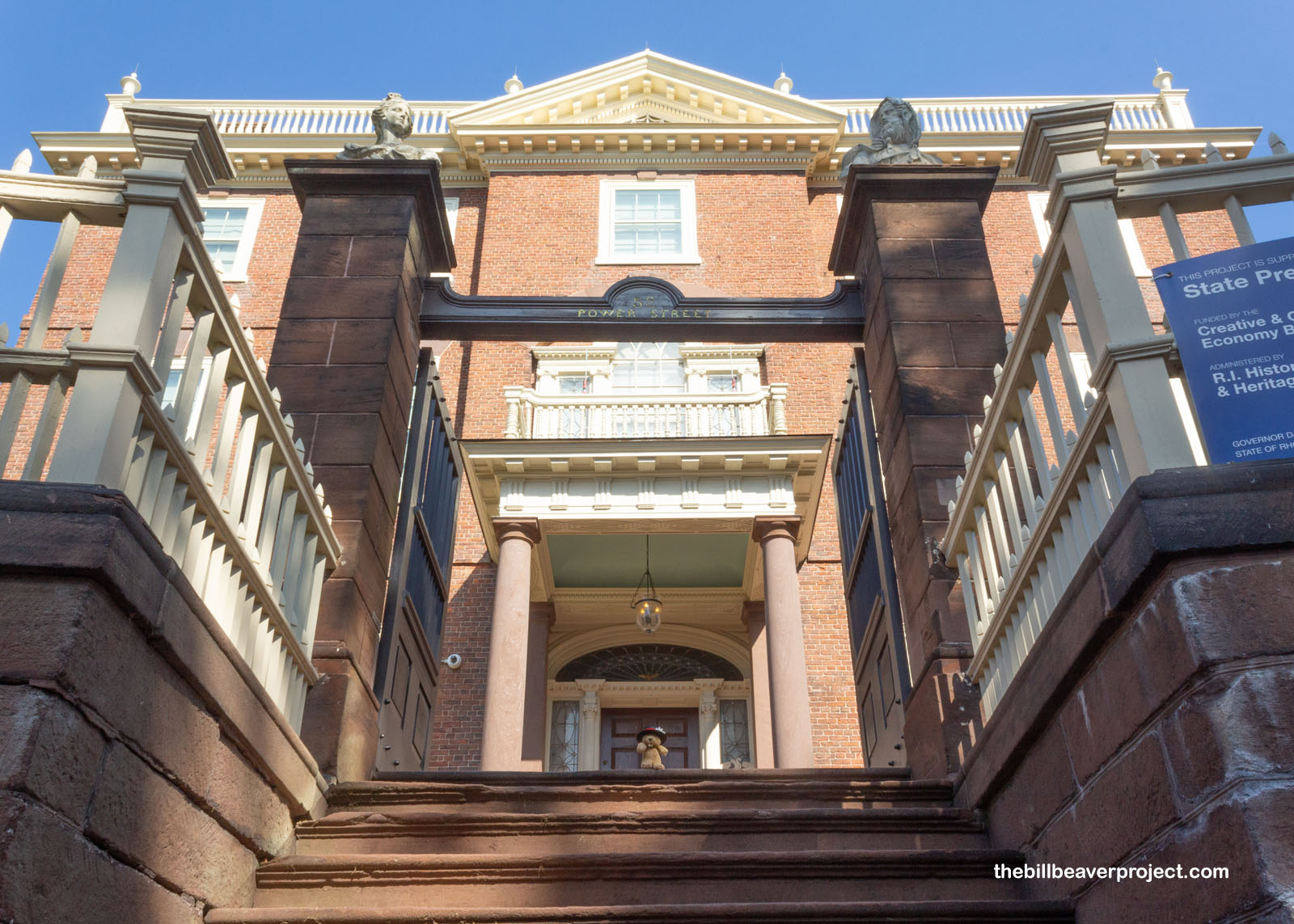 |
On the complete opposite end of the spectrum, around the corner stood the flamboyant home of Ambrose Burnside, Union general during the Civil War, 3-time Rhode Island governor after, and hairstyle trendsetter for all time! The Second Empire style home was a monumental achievement on the part of architect, Alfred Stone, who had to design it to fit a trapezoidal lot on the steep slope of Planet Street! After Governor Burnside died in 1884, this home served as headquarters for the Providence Children’s Friend Society House for Aged Women and Providence Association for the Benefit of Colored Children!
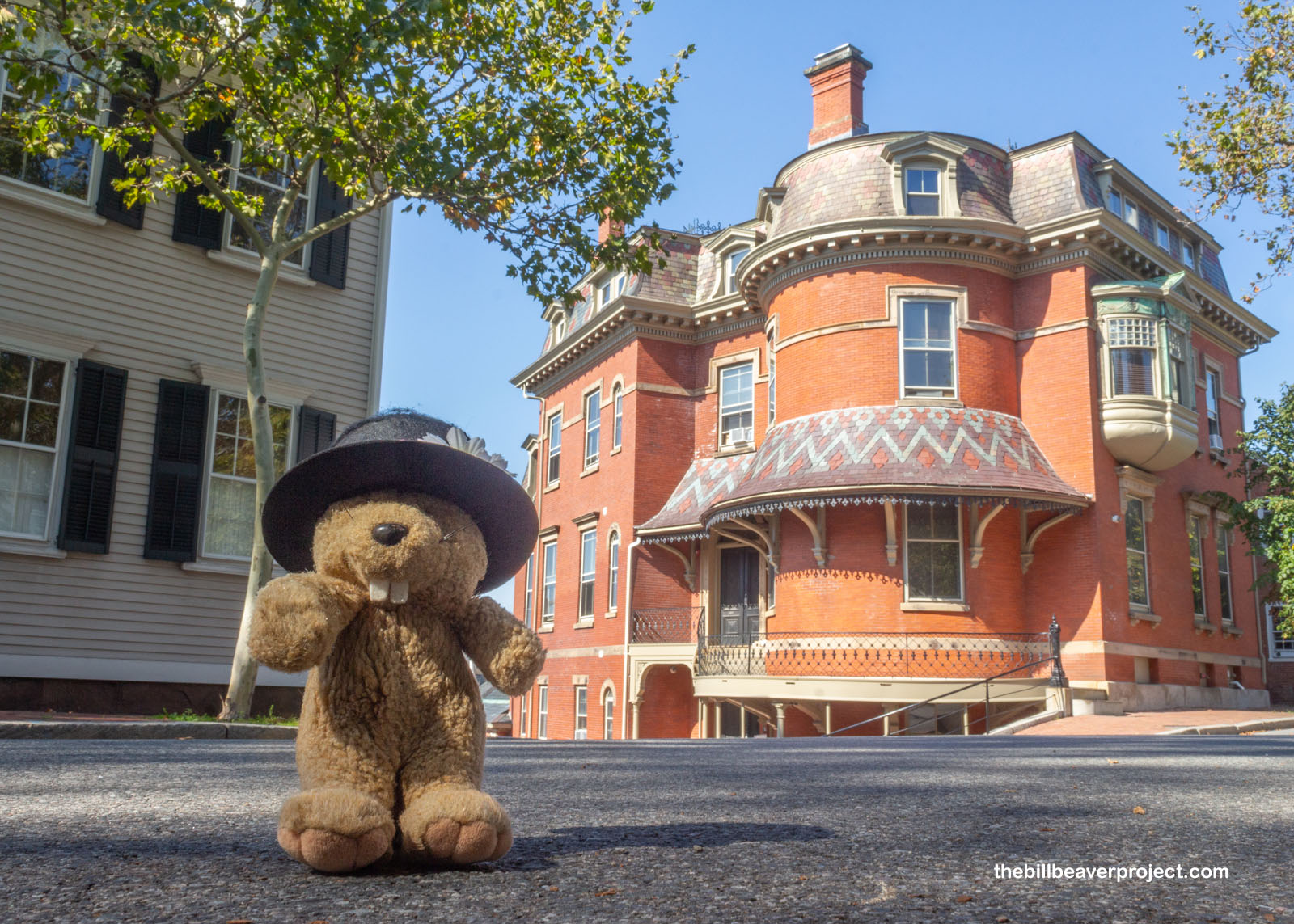 |
And speaking of monumental achievements, the nearby Providence Athenæum boasted all the columned magnificence of a Greek temple! Not just a library, an athenæum can be a gallery, a school, or really any place of learning! This one, a Greek Revival temple designed by William Strickland, opened its doors on July 11, 1838, representing a merger between the old Providence Athenæum and the older Providence Library Company!
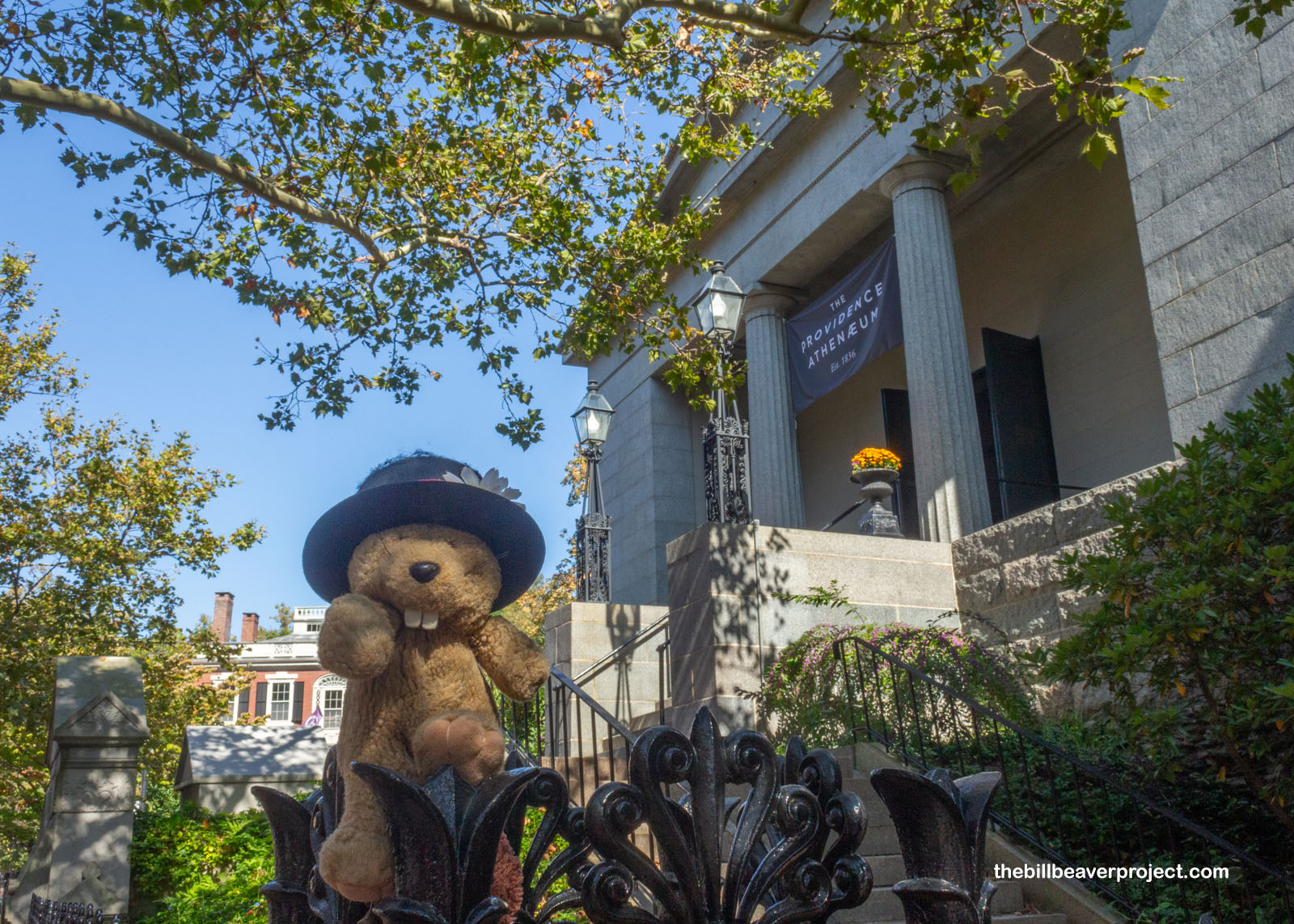 |
Before libraries became public, they were mostly funded by a group of members, and the Providence Athenæum was one of those membership libraries. Today, it’s home to rare books dating back to 1753, organized by the same handwritten card catalog created by Mary Angell in 1872! Some famous folks who frequented the Athenæum over the years included feminist author, Charlotte Perkins Gilman of The Yellow Wallpaper fame, secretary of state, John Hay, and Edgar Allen Poe, who courted Sarah Helen Whitman in and around this home of learning!
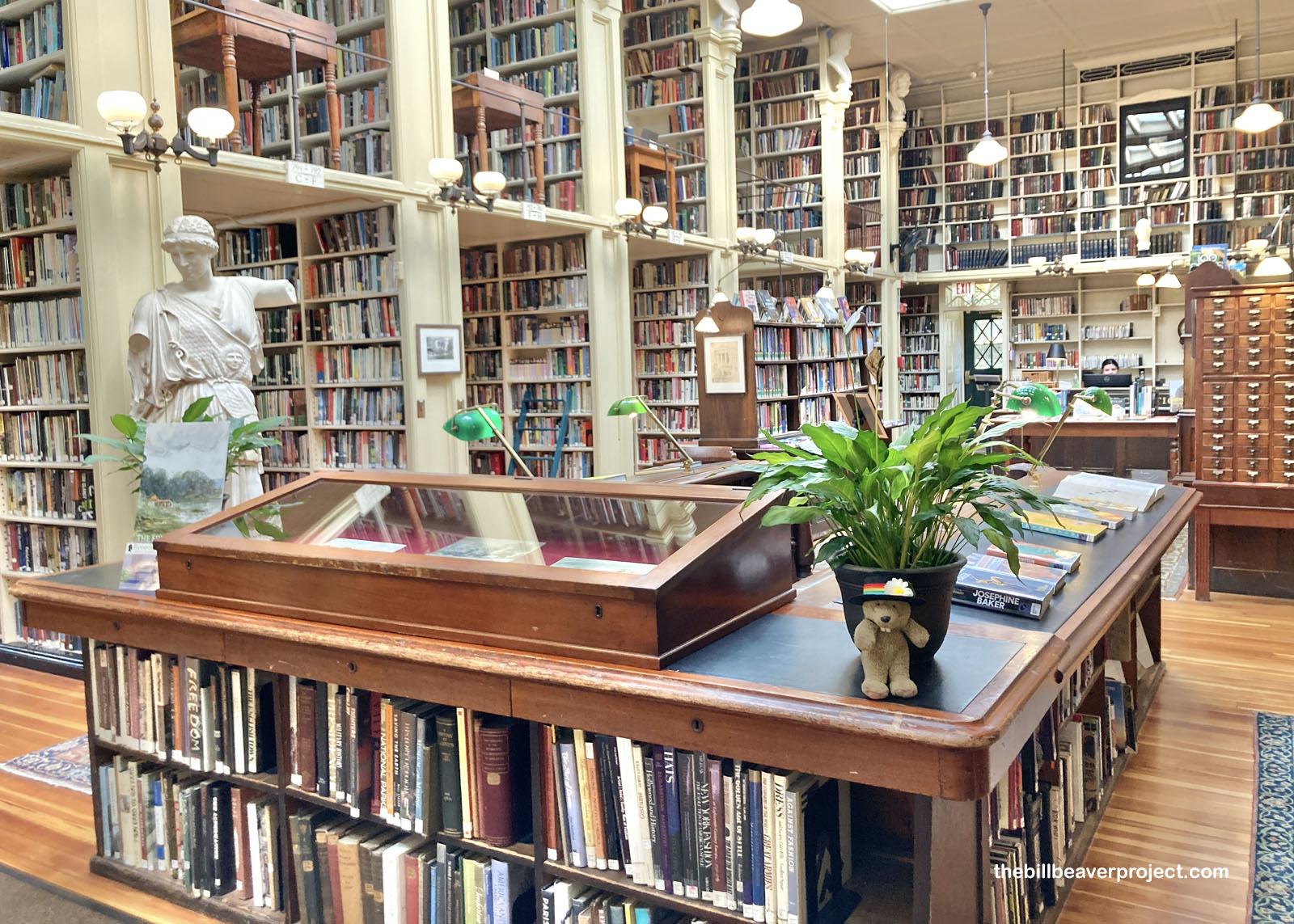 |
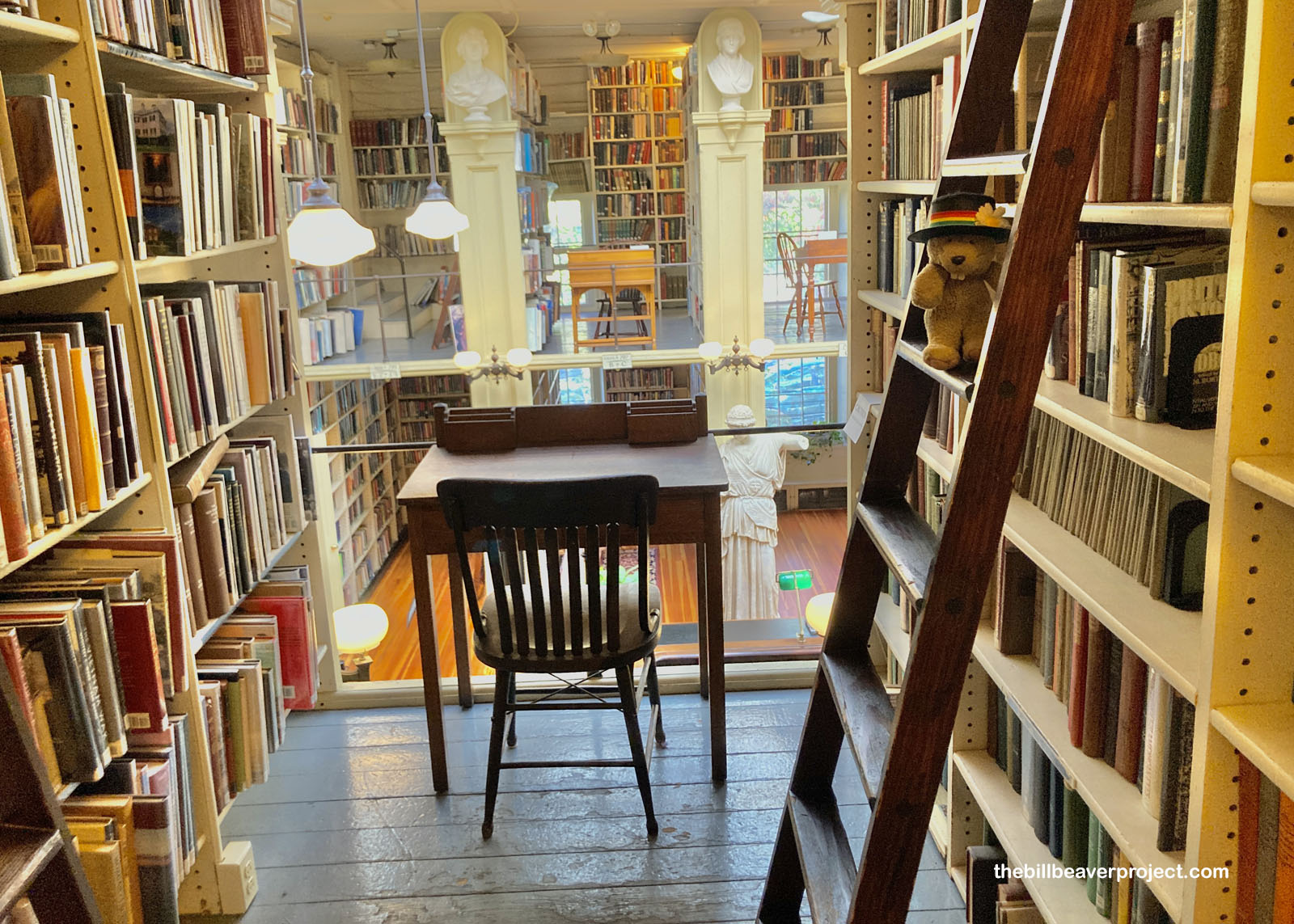 |
All of this knowledge feeds hungry minds at nearby Brown University, one of the most selective Ivy League schools in the country and home to one of only seven college buildings in the whole US that date back to pre-Revolution times! Completed in 1770, University Hall is now surrounded by the campus, where students were studying, signing petitions, and selling elote! In line with its surrounding city, Brown University was the first in the Ivy League to accept students of all religious backgrounds!
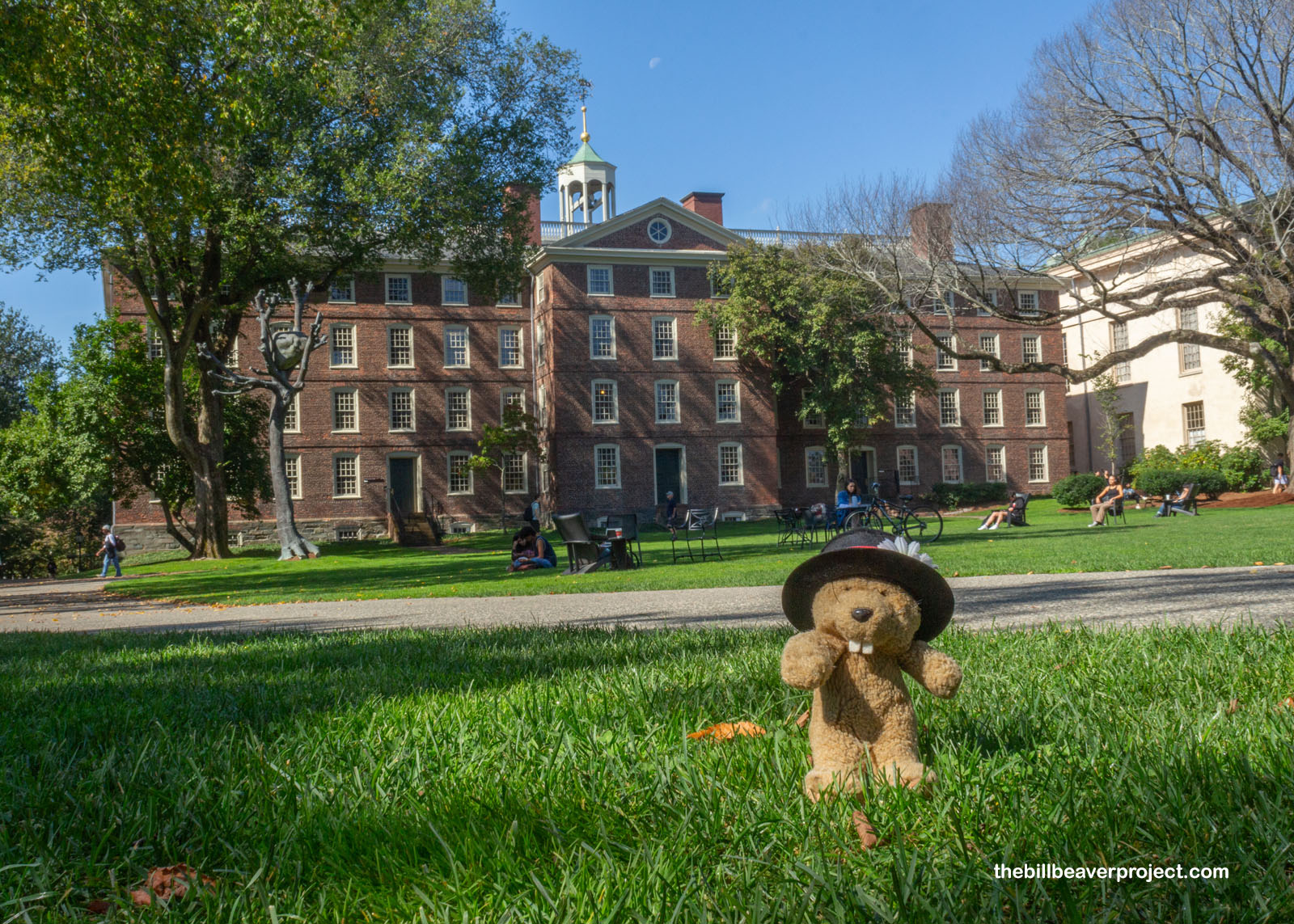 |
In sports, they’re represented by the Brown Bears, originally live ones like Helen in 1905 and Bruno in 1921, but since the 1960s, the role of Bruno the Bear has been played by a human in a costume! Fun fact: Brown University’s first mascot was a donkey! That didn’t last long because too many folks laughed at it, and it kept getting spooked by the game!
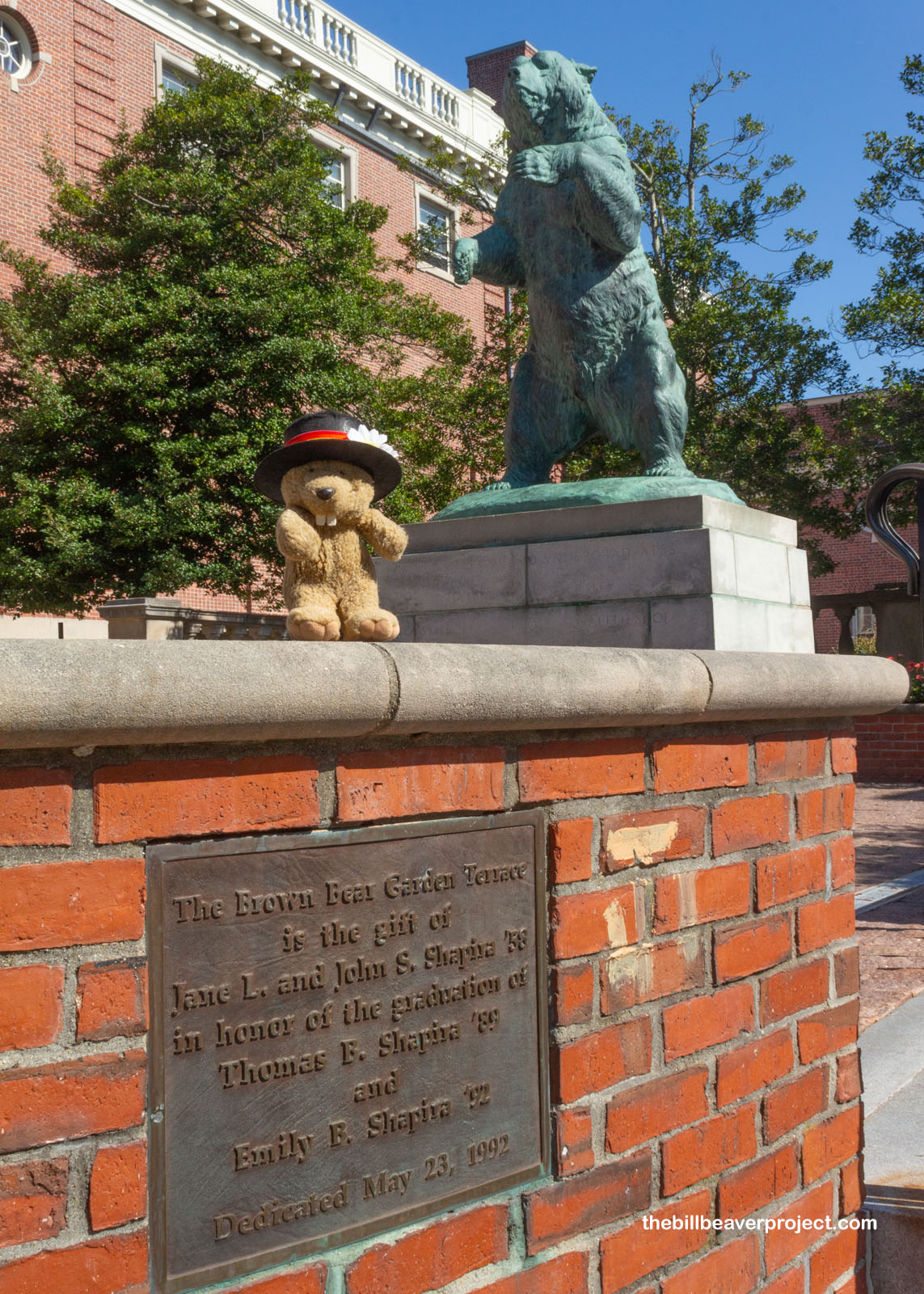 |
Brown’s Department of Physics still uses the 1891 Ladd Observatory to learn the differences between present and past observation techniques. The most obvious difference is that this was a rural outpost of Providence in the Victorian Era, but now the observatory is surrounded by the city! This observatory’s greatest contribution to date has been a timekeeping system based on the stars! Before there was nationwide standard time, the Ladd Observatory would send signals to a central station in Providence, which would telegraph the time to homes and businesses across the city!
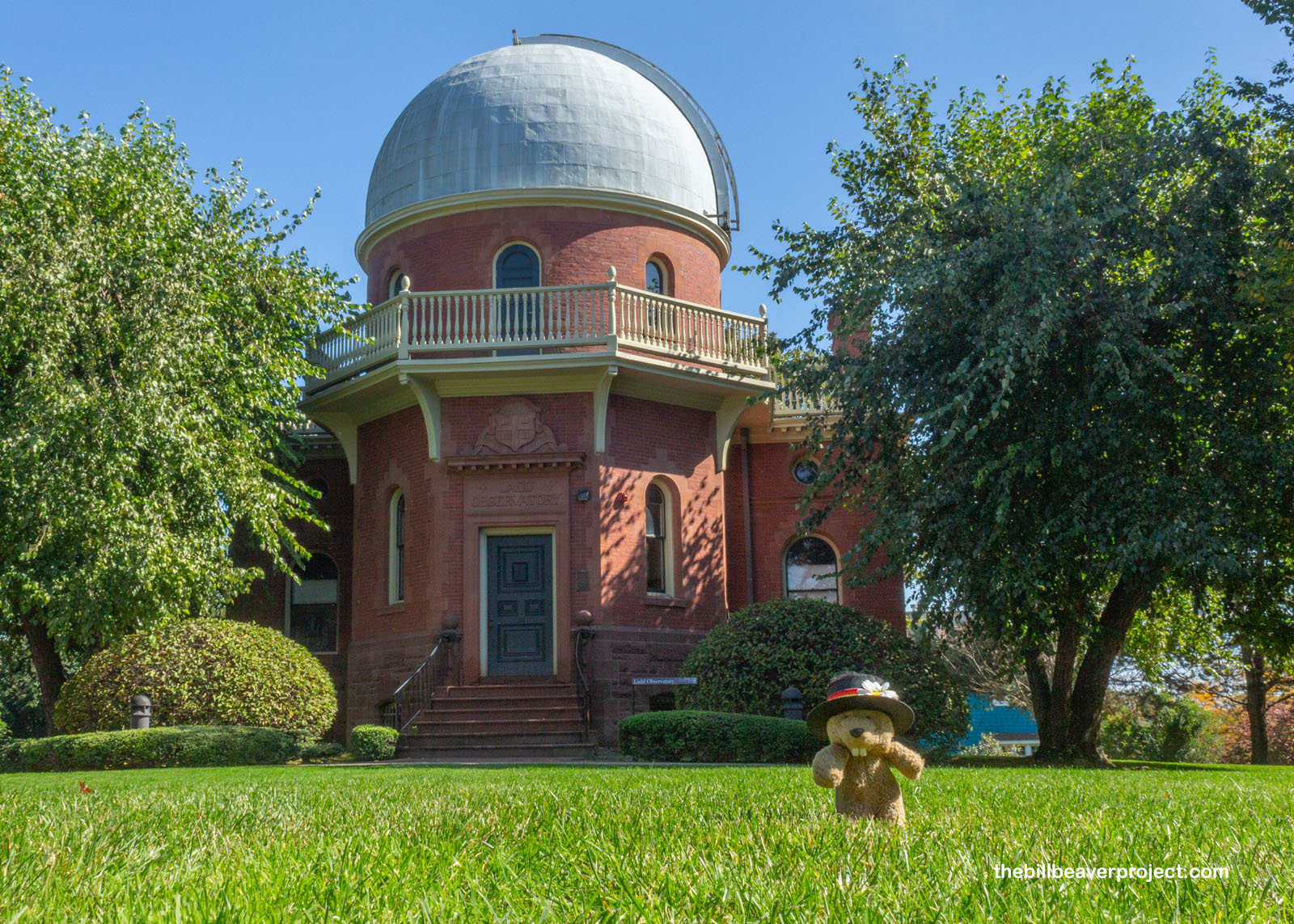 |
Whew! After all this morning’s running around, my hunger for history turned into hunger for… well, general hunger! Luckily, just north of Providence in Pawtucket, there was a place that could satisfy both cravings, the Nationally Registered Modern Diner! Did you know that the diner, as we know it, originated in Providence? In their original form, created by Walter Scott in 1872, they were practically food trucks, drawn by horses to serve folks who worked late after normal restaurants closed. This one, designed by Roland Stickney, dates back to 1941, one of only two known surviving Sterling Streamliner diners!
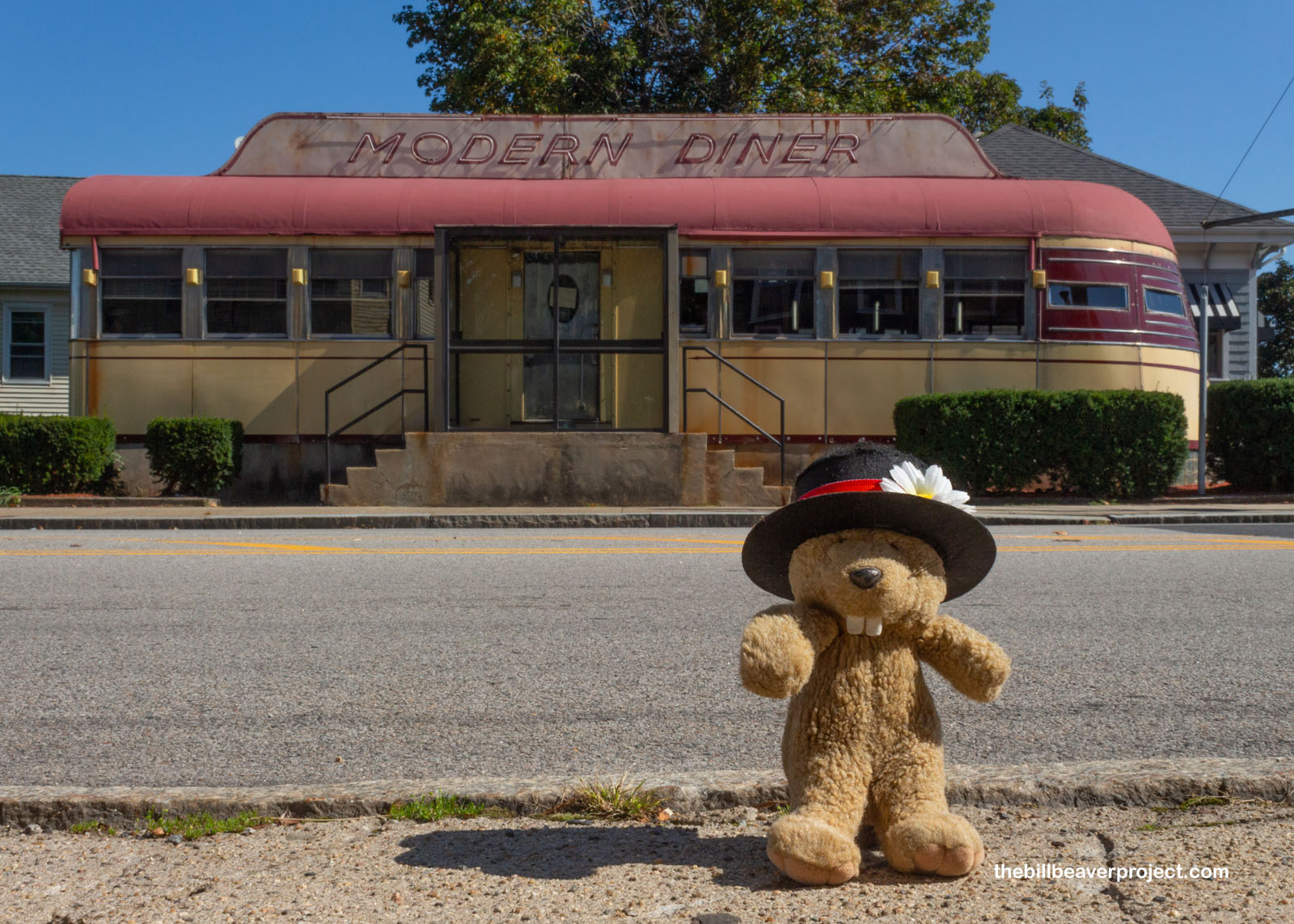 |
I arrived not a moment too soon, because the Modern Diner is only open until 1:00 PM! Thinking fast, I sought out the signature dish of the country’s first diner to be put on the National Register of Historic Places? That dish was Custard French toast! Served all day, this scrumptious morsel was the result of improvisation in the kitchen, when chef, Nick Demou, made too much vanilla pudding and decided to drizzle it over French toast! The rest, topped with fresh fruit, candied pecans, and raspberry syrup, is history! (Delicious, delicious history…)
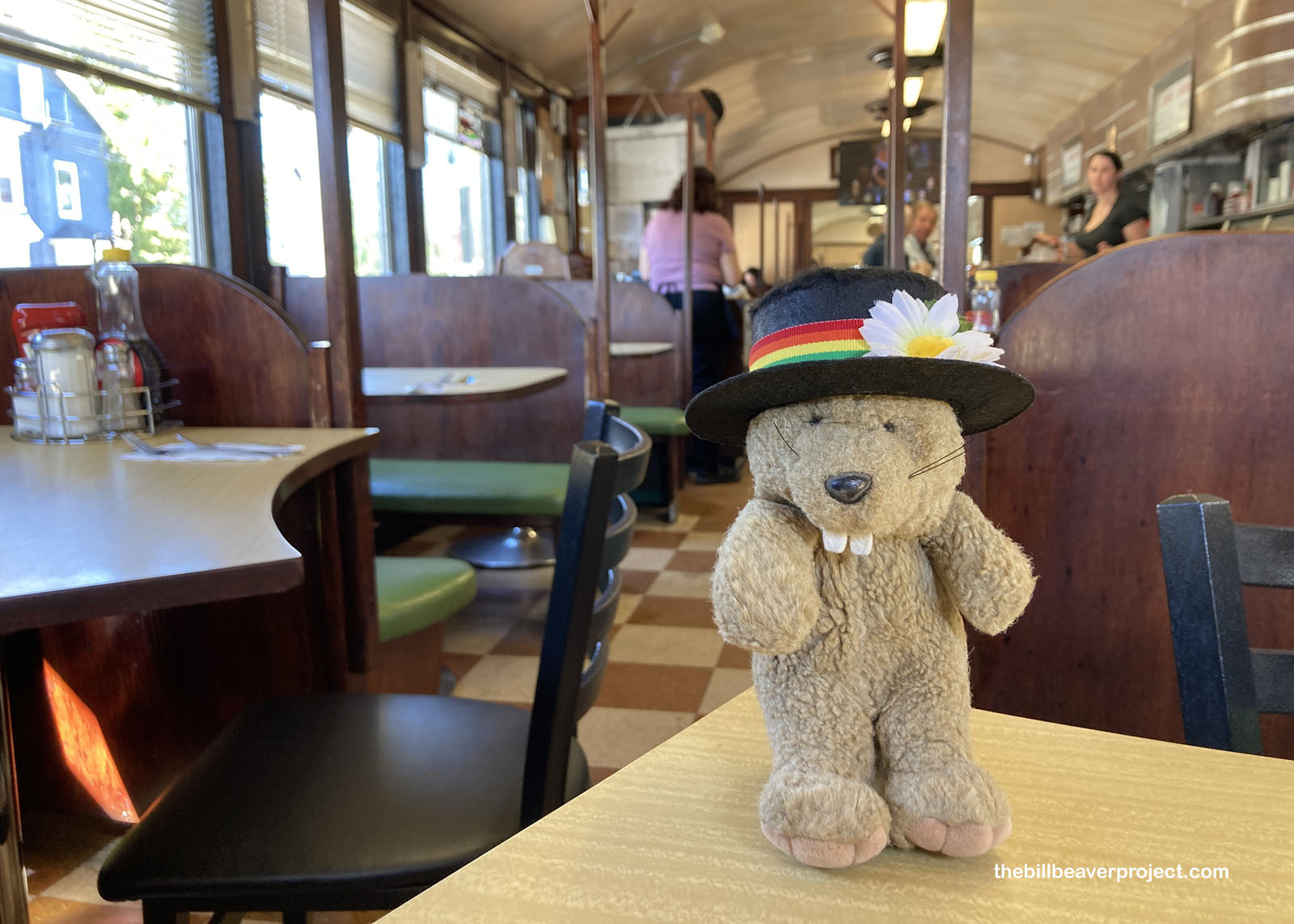 |
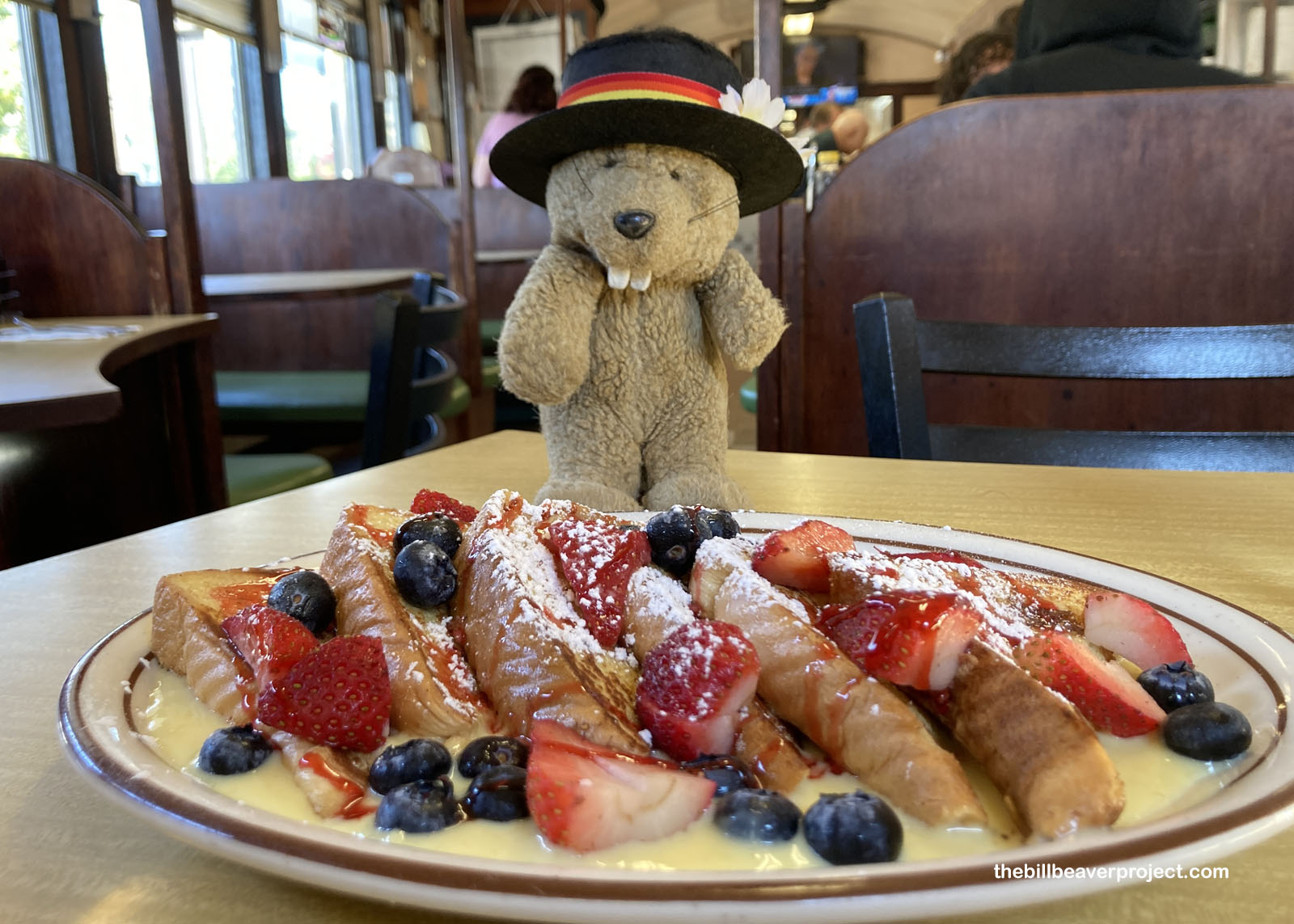 |
That breakfast-for-lunch charged me up plenty for my next stop. So far, the fall foliage has been pretty drab, but I found just enough of it on the side of the Blackstone River to celebrate Lastleaf! This river gets its name from William Blackstone, Boston’s first European settler, who came here in 1635, which was much more interesting than the Lastleaf celebration. The river looked super inviting, but I wasn’t going to hop in; this is one of the most polluted rivers in the country! Like the Los Angeles River and Cuyahoga River, the Blackstone has been infused with years of industrial runoff! In short, I did not go for a Lastleaf swim, but all of this grossness led to the next stop on my national park quest!
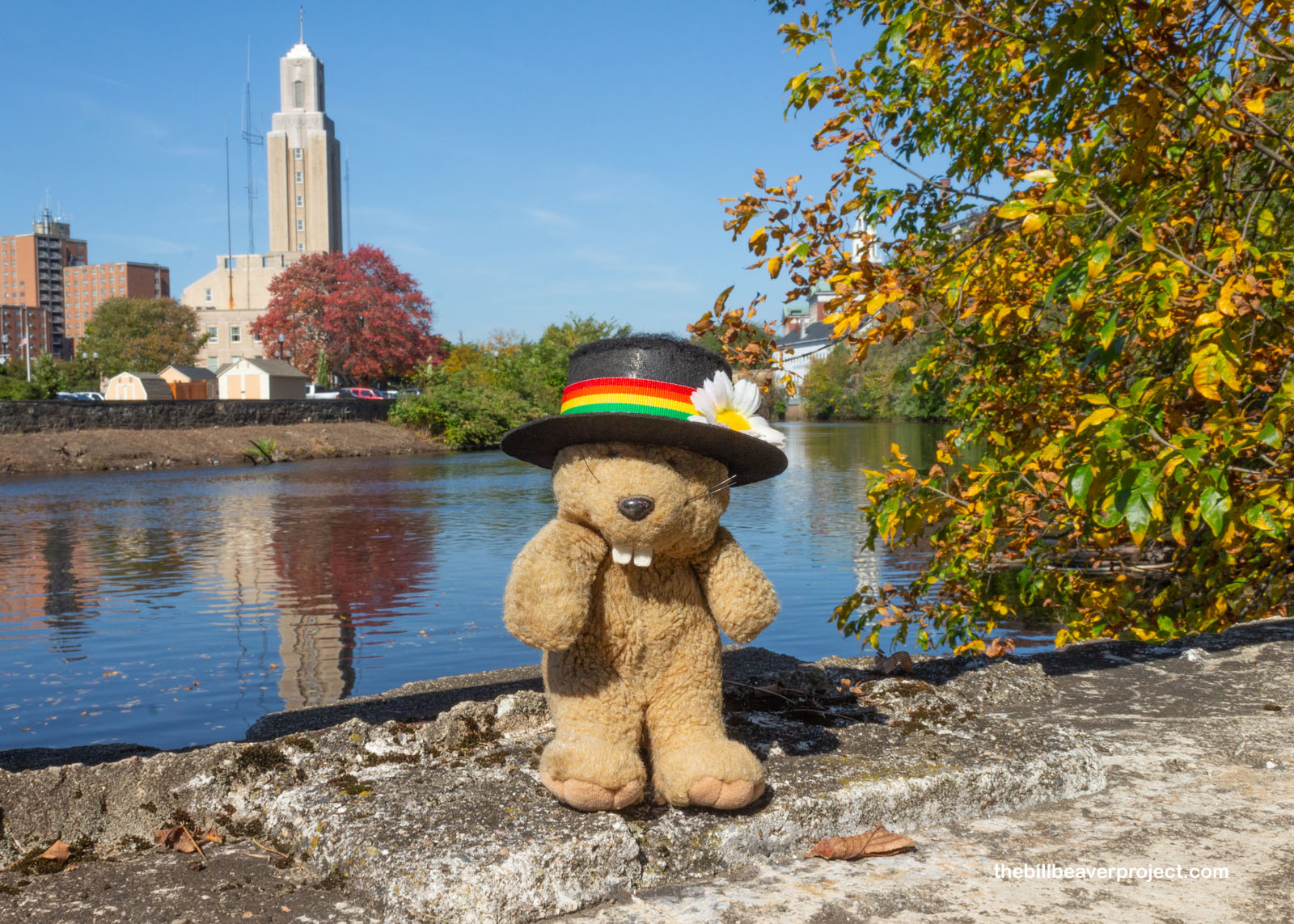 |
Blackstone River Valley National Historical Park is a multi-site park that tells the story of how the American textile industry sprung up on the banks of the Blackstone River! That very first mill opened in 1789 at Pawtucket Falls under the direction of Samuel Slater, also known as “Slater the Traitor!”
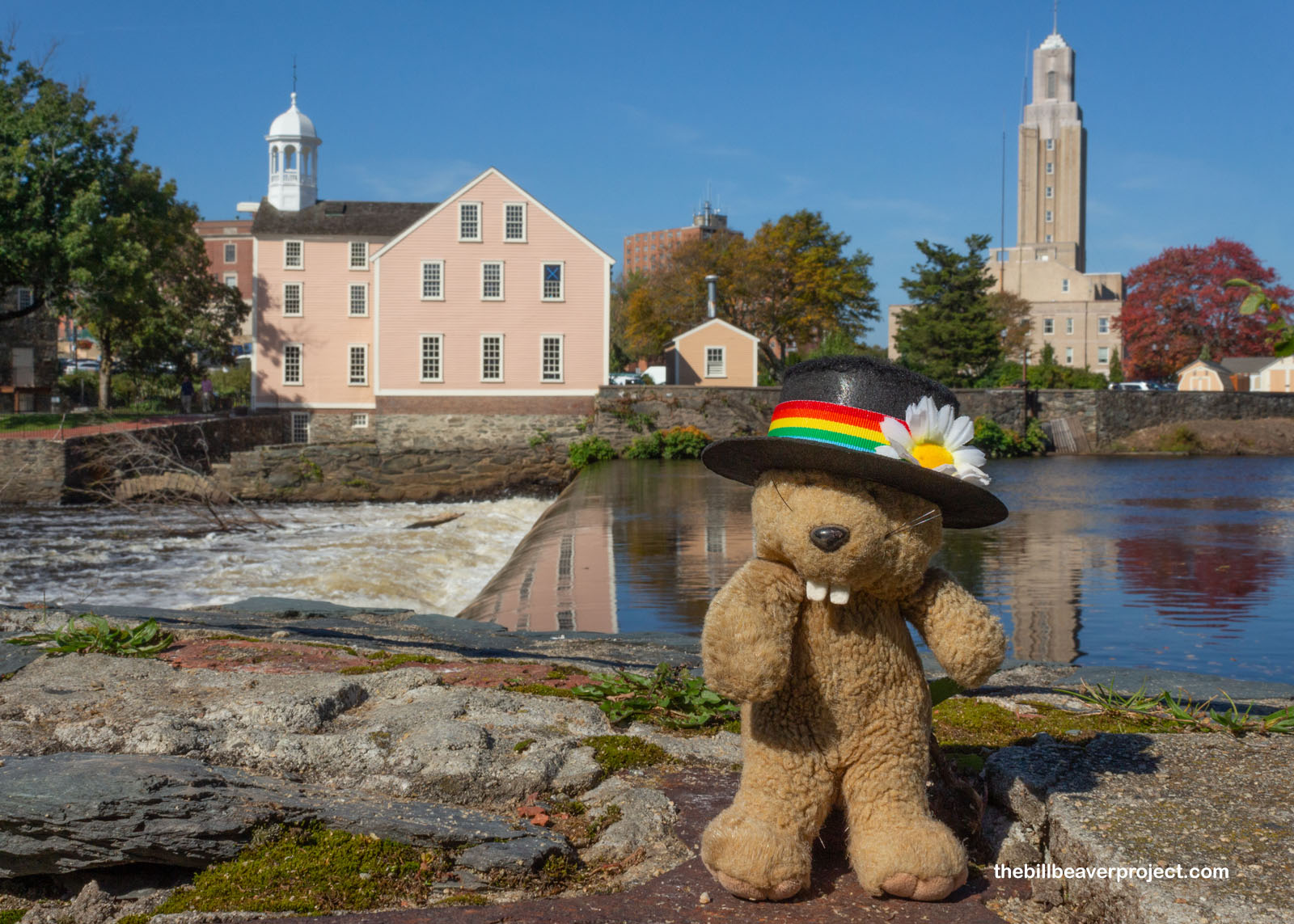 |
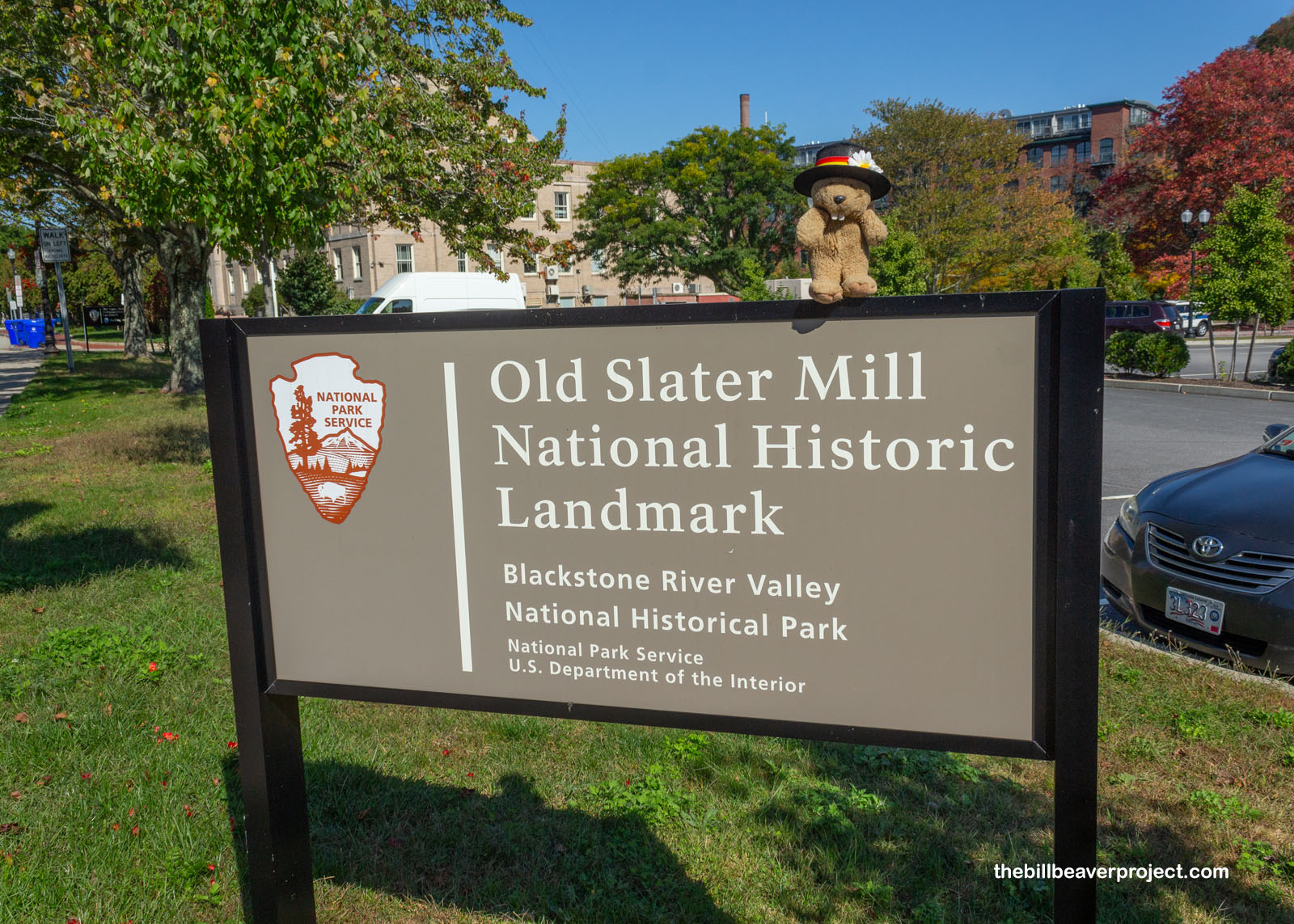 |
So why was Samuel Slater called a traitor? Well, Britain kept its cloth making machines and techniques super secret, but they couldn’t police brains back then! After spending years in a mill learning how the machines worked, 21-year old Mr. Slater left England and sailed for the USA, where he met investor, Moses Brown, and together, they developed the Rhode Island System of Manufacture! Built on child labor, this system spread far up the river and laid the groundwork for the American Industrial Revolution! This was decades before the rise of Lowell, Massachusetts and almost two hundred years before the first environmental laws!
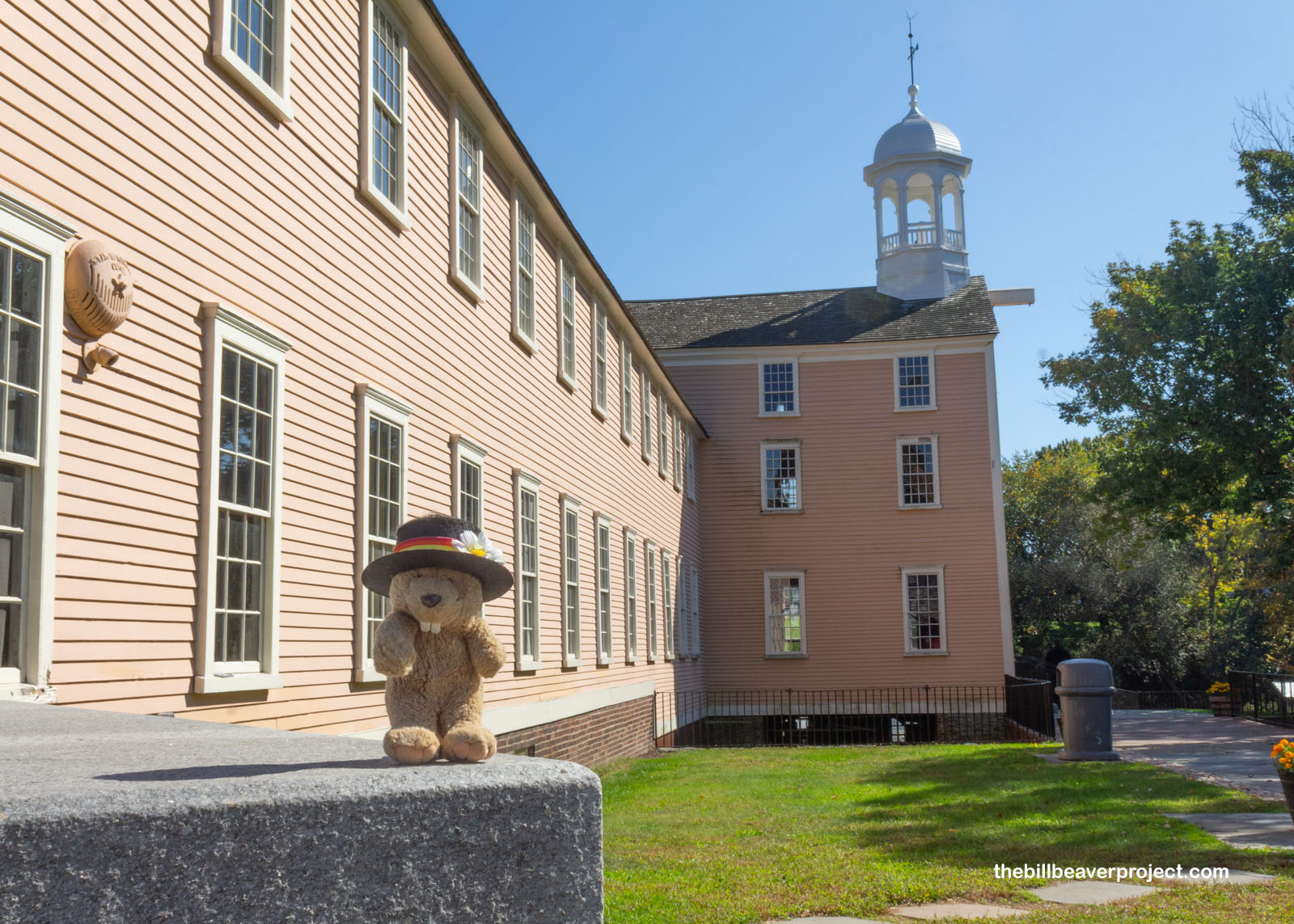 |
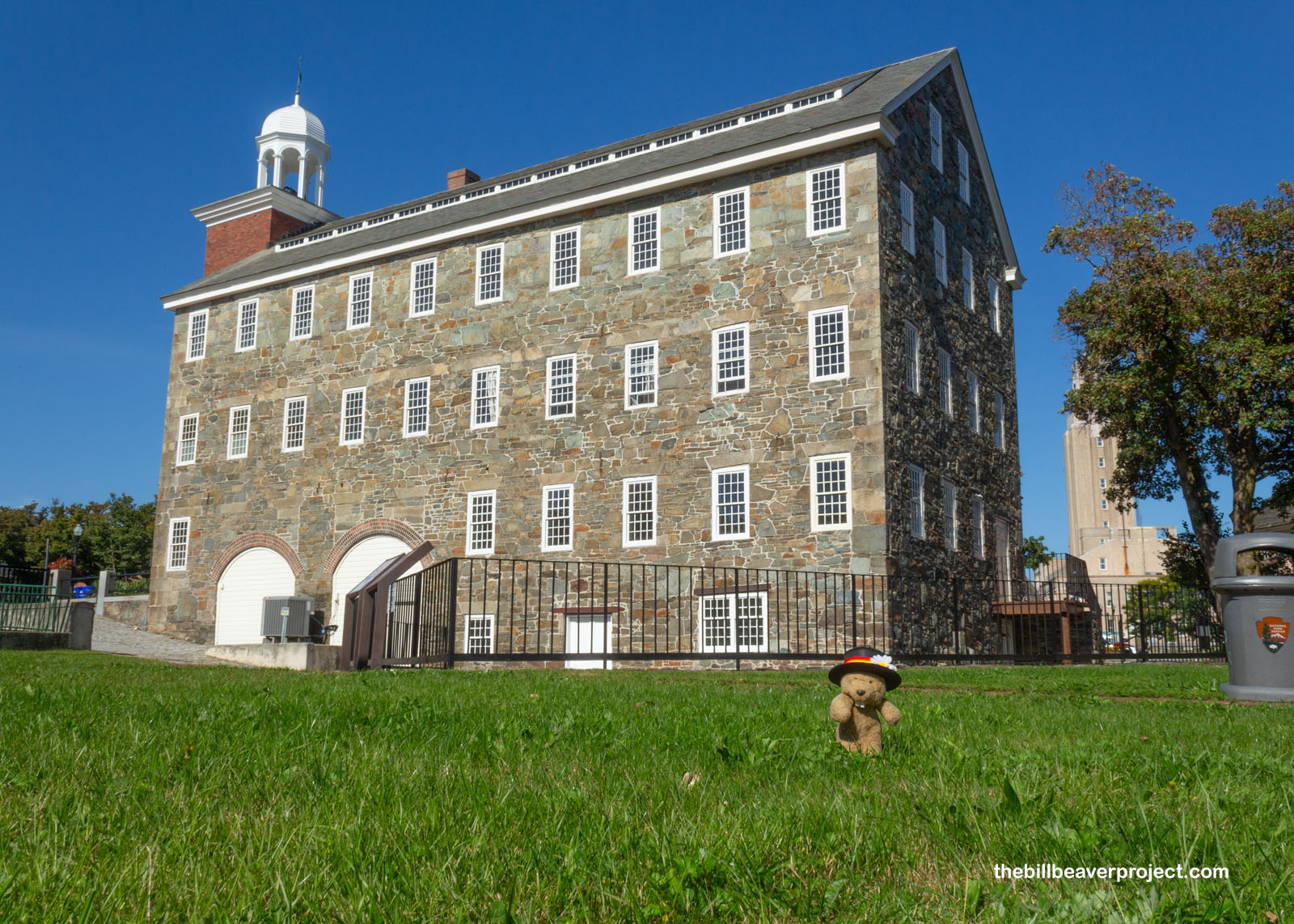 |
This park was tricky to navigate, having only been designated in 2014 as a hodge-podge of local, state, and national park sites that all tell a piece of the story of the Blackstone Heritage Corridor! One such story surrounds Wilbur Kelly, a sea captain for the Brown & Ives Company, who at one point captained John Brown’s Hope! After spanning the globe from Amsterdam to India, Mr. Kelly settled here in 1823, near Lincoln, Rhode Island, to invest in milling.
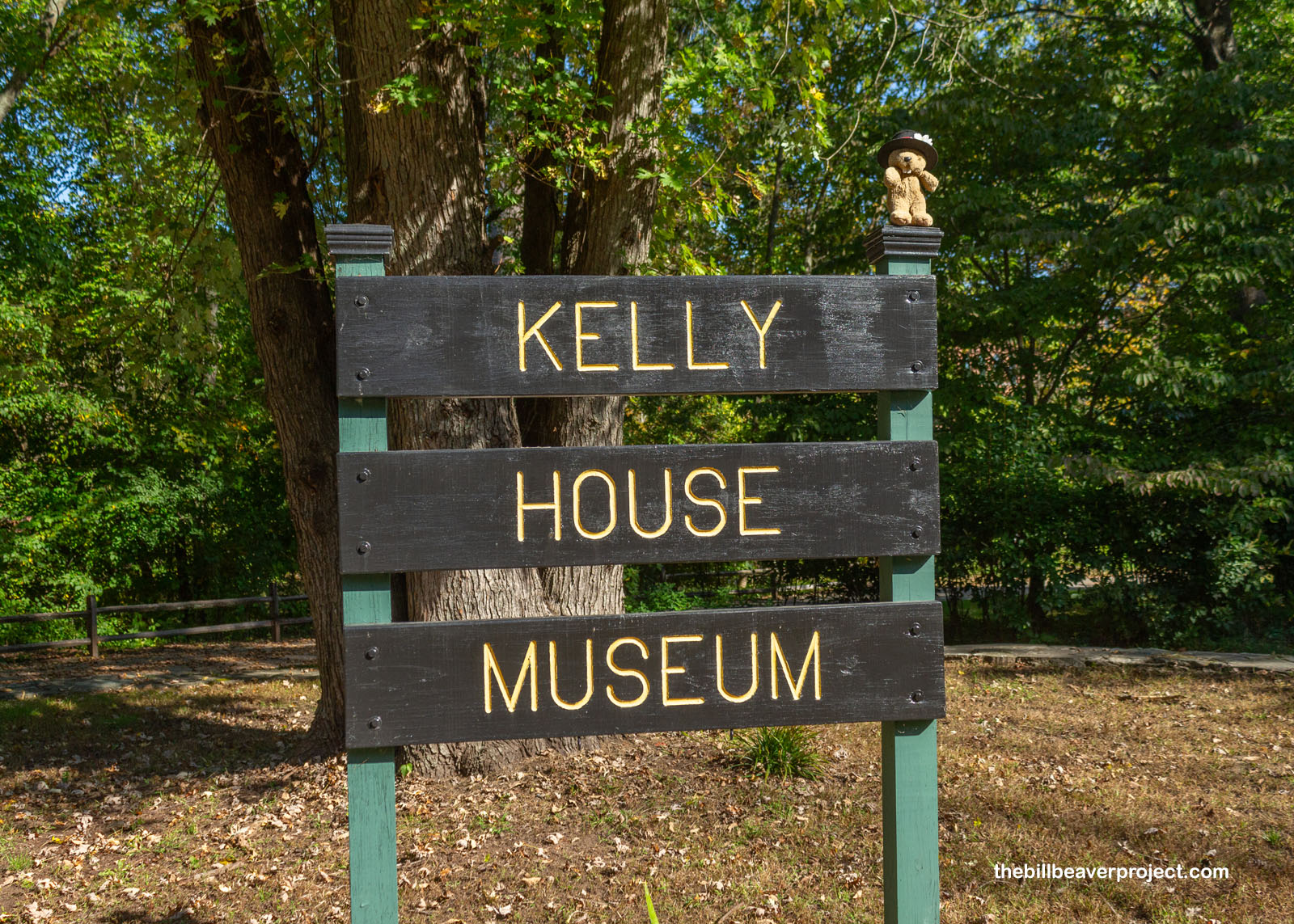 |
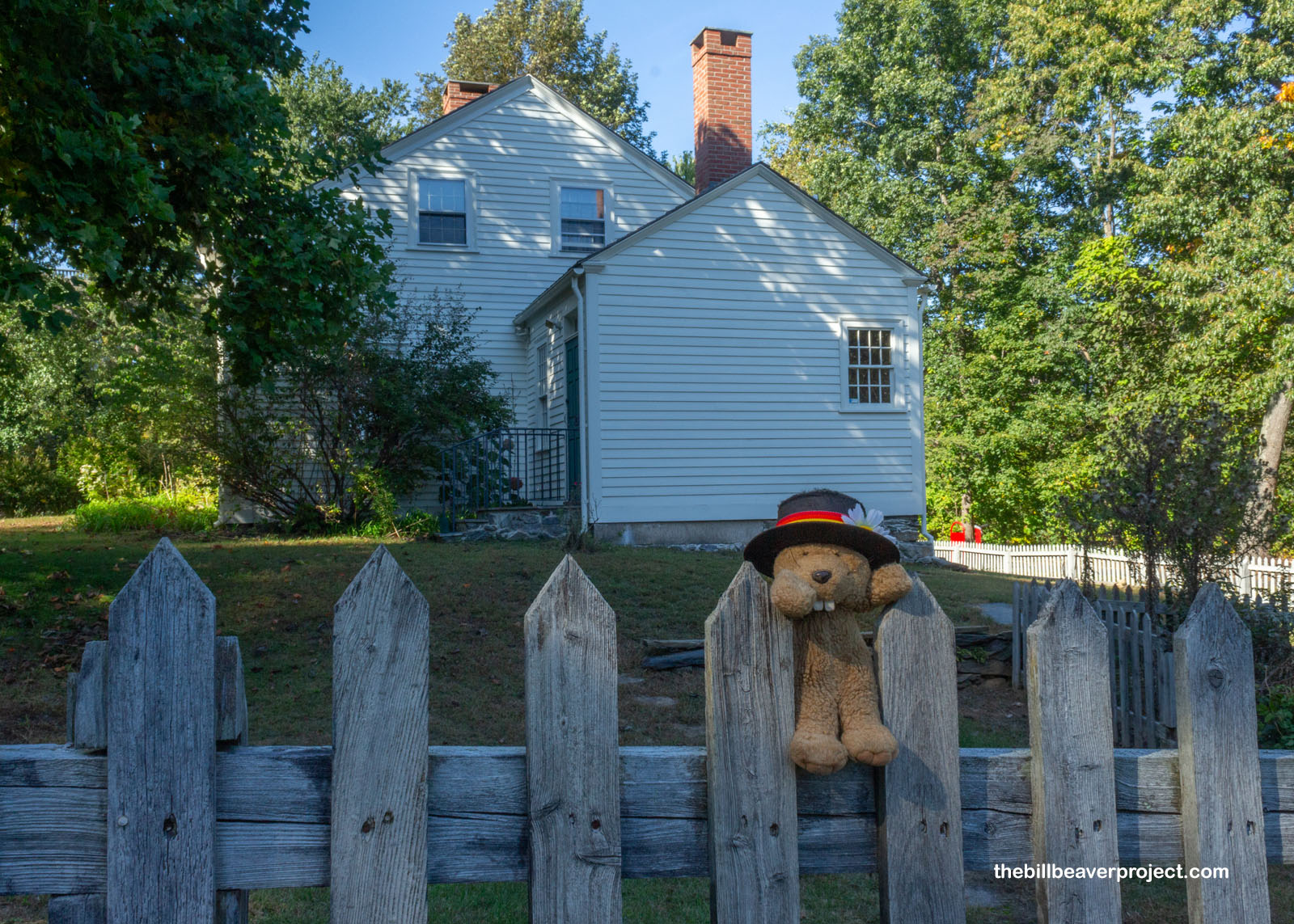 |
Mr. Kelly invested in property on both sides of the Blackstone. On the side where he lived, the mill is no longer standing, but sometimes, impressions are all you need to tell a story! By that I mean, the impression of a canal lining the Kelly property was part of his investment in the Blackstone Canal Company. The completion of these canals made it faster and cheaper to get goods downriver to the ports of Providence!
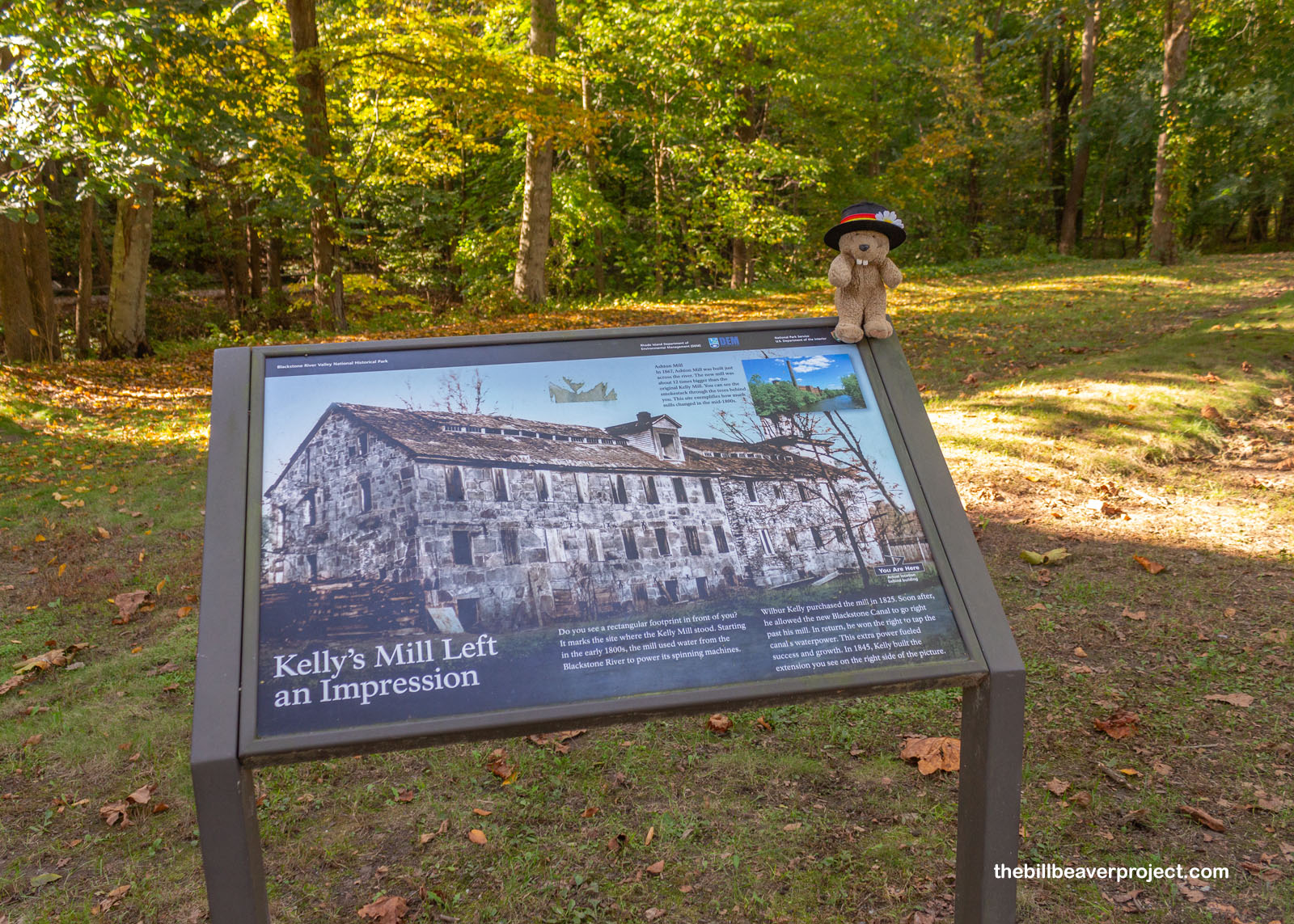 |
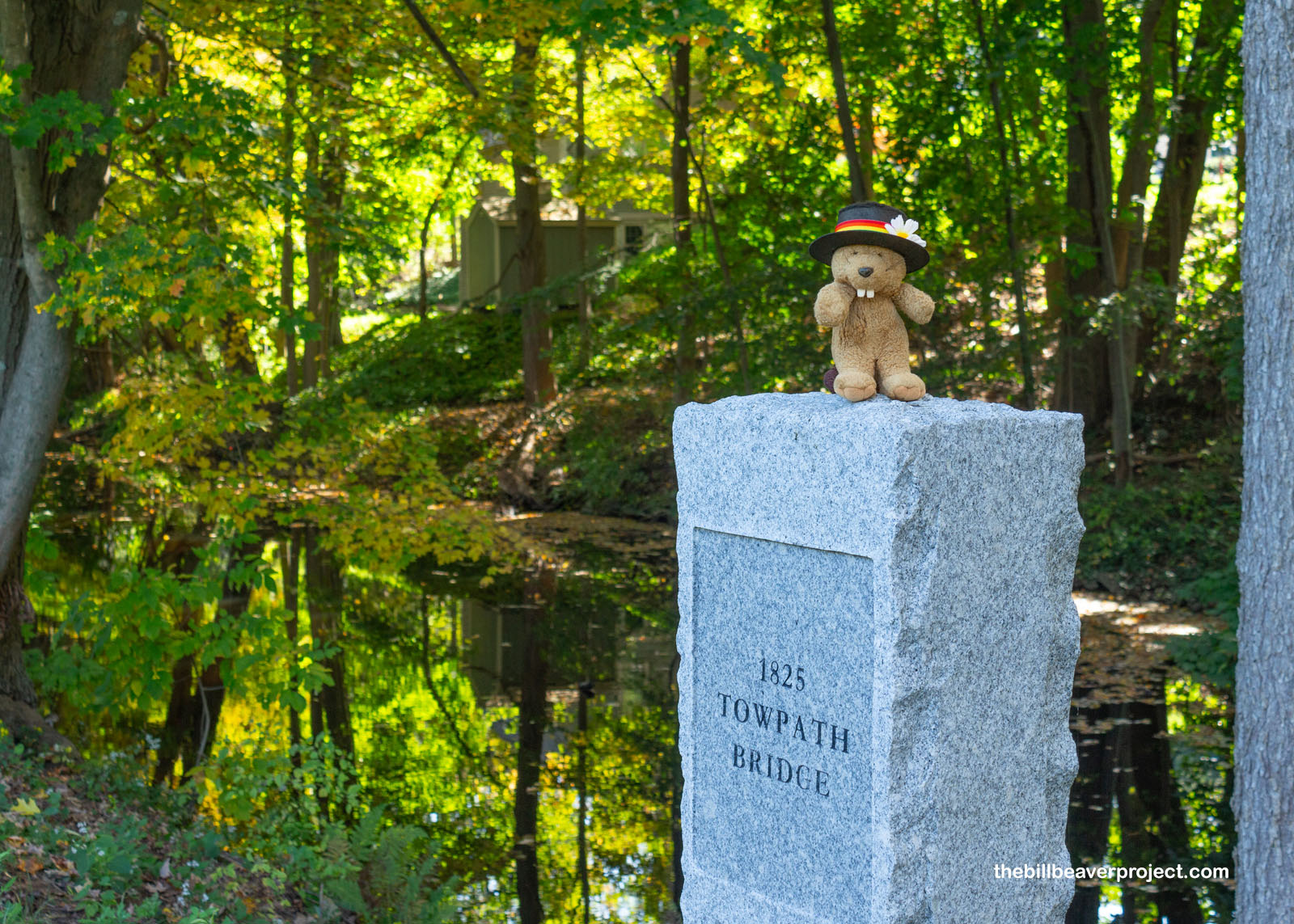 |
On the other side of the river was the remnant of Mr. Kelly’s second mill, which he sold to the Lonsdale Company. Under their management, they turned this mill into an entire village called Ashton, which made use of the canals, then the railroads, and specialized in muslin cloth! After closing for the Great Depression in 1936, the mill came under ownership of Owens-Corning Fiberglas Company, who made, among other things, the beta cloth for space suits used on the Apollo Moon missions! Today, like in Lowell, the Ashton mills have been converted into apartments!
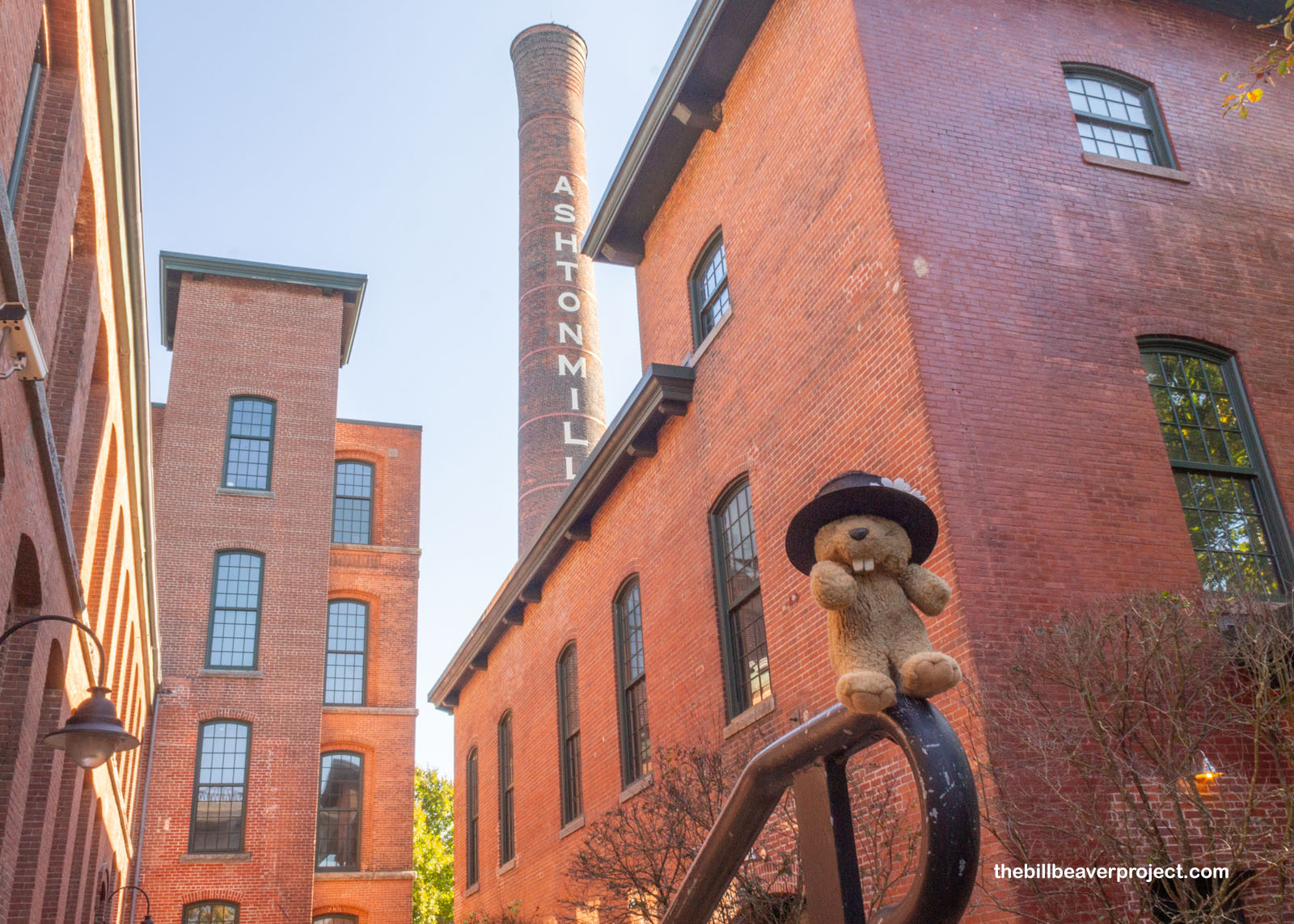 |
But Ashton was far from the first mill village, and certainly not the only one turned into an apartment community. In fact, everything we just learned about Mr. Kelly came down to the innovations of our old traitorous friend, Samuel Slater, and his brother, John. Starting in 1807, they founded Slatersville, the very first mill village. In founding it, the Slaters showed all aspiring millers that it was possible to set up a mill practically anywhere along the river!
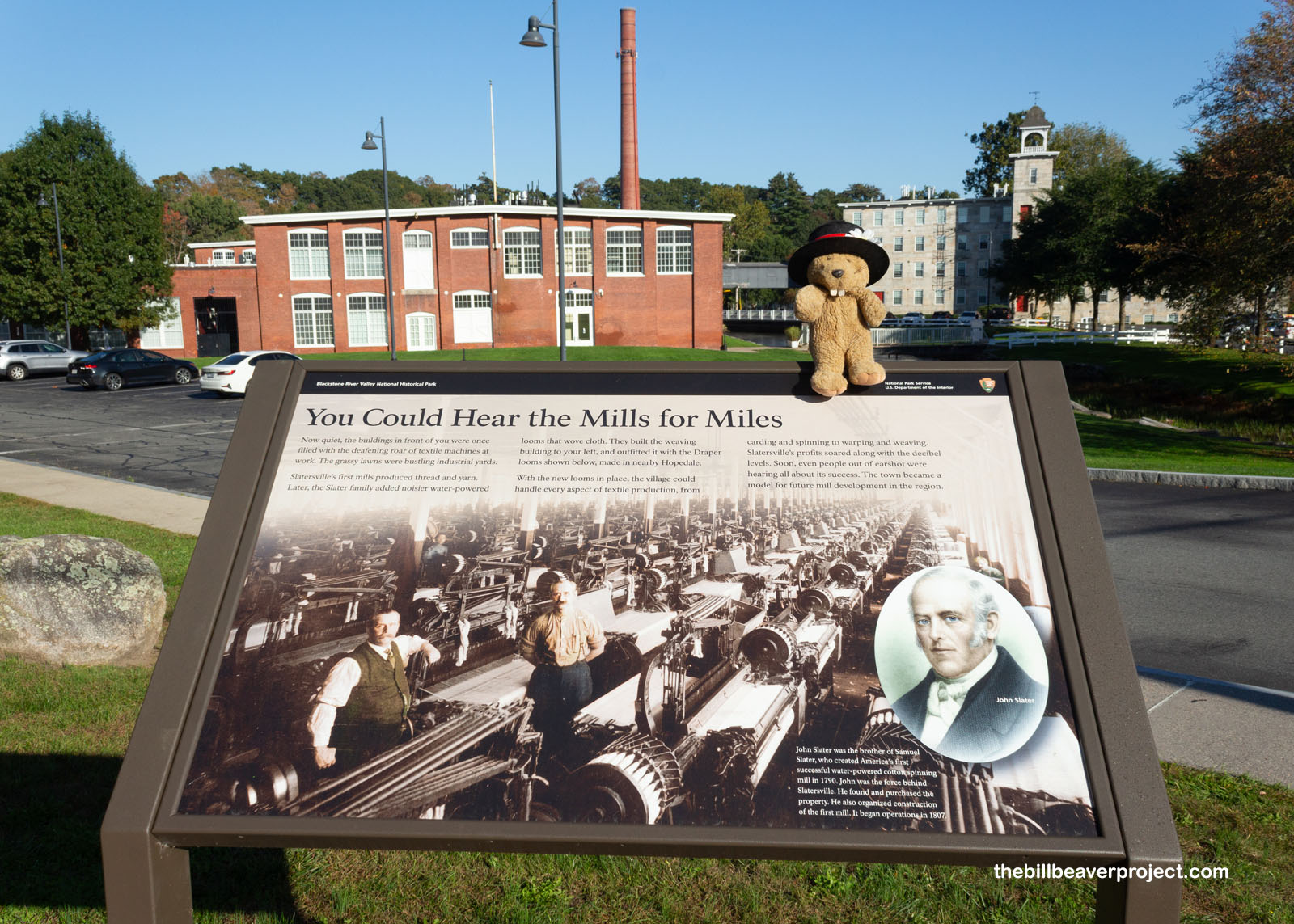 |
With worker housing, stores, and a church, Slatersville stayed in the family all the way until 1900! The Slater decendants then sold it to James Hooper, who then sold the entire village to Henry Kendall in 1915. He was the one who gave the town a real residential makeover, so today, Slatersville is more charming than industrial!
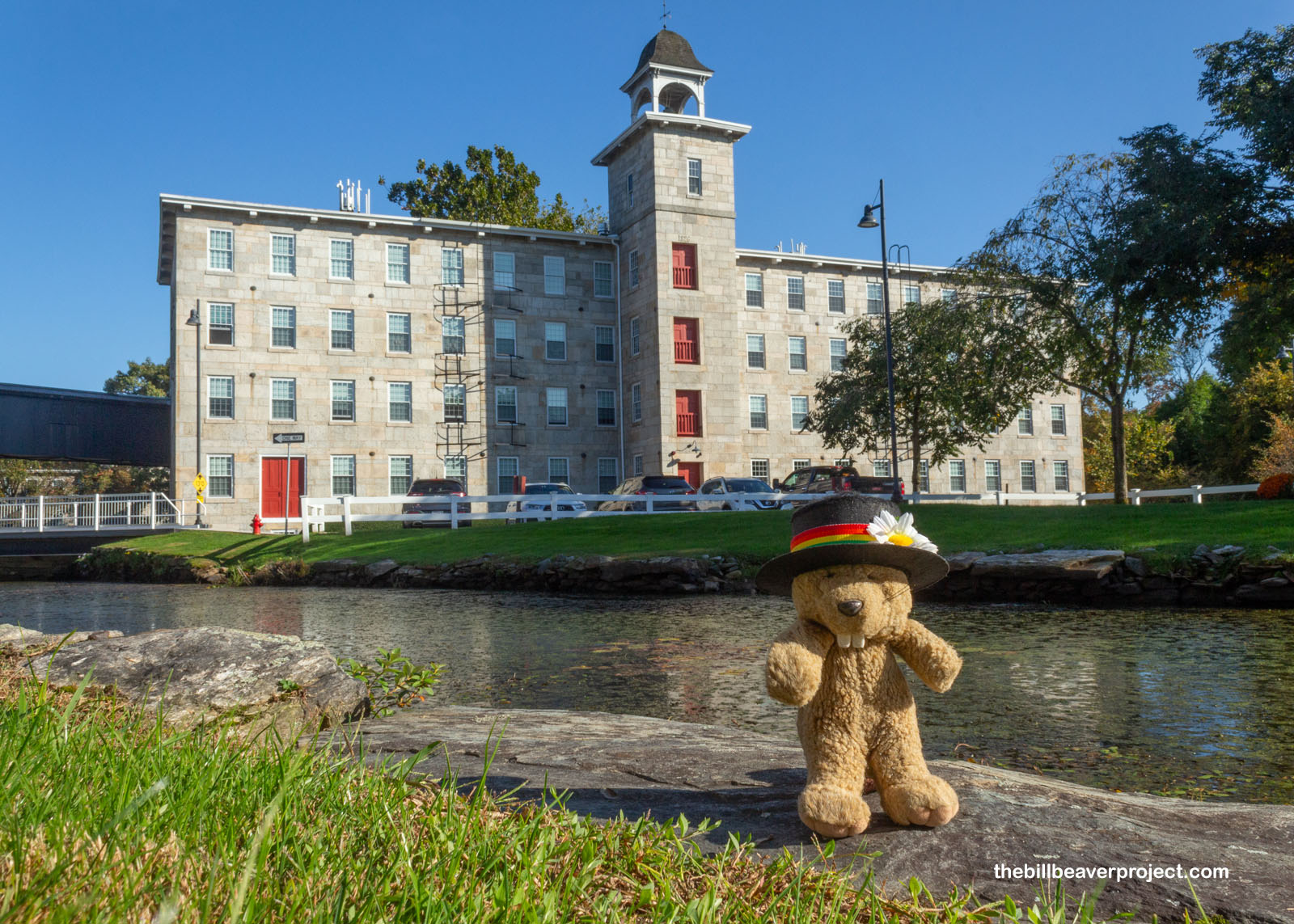 |
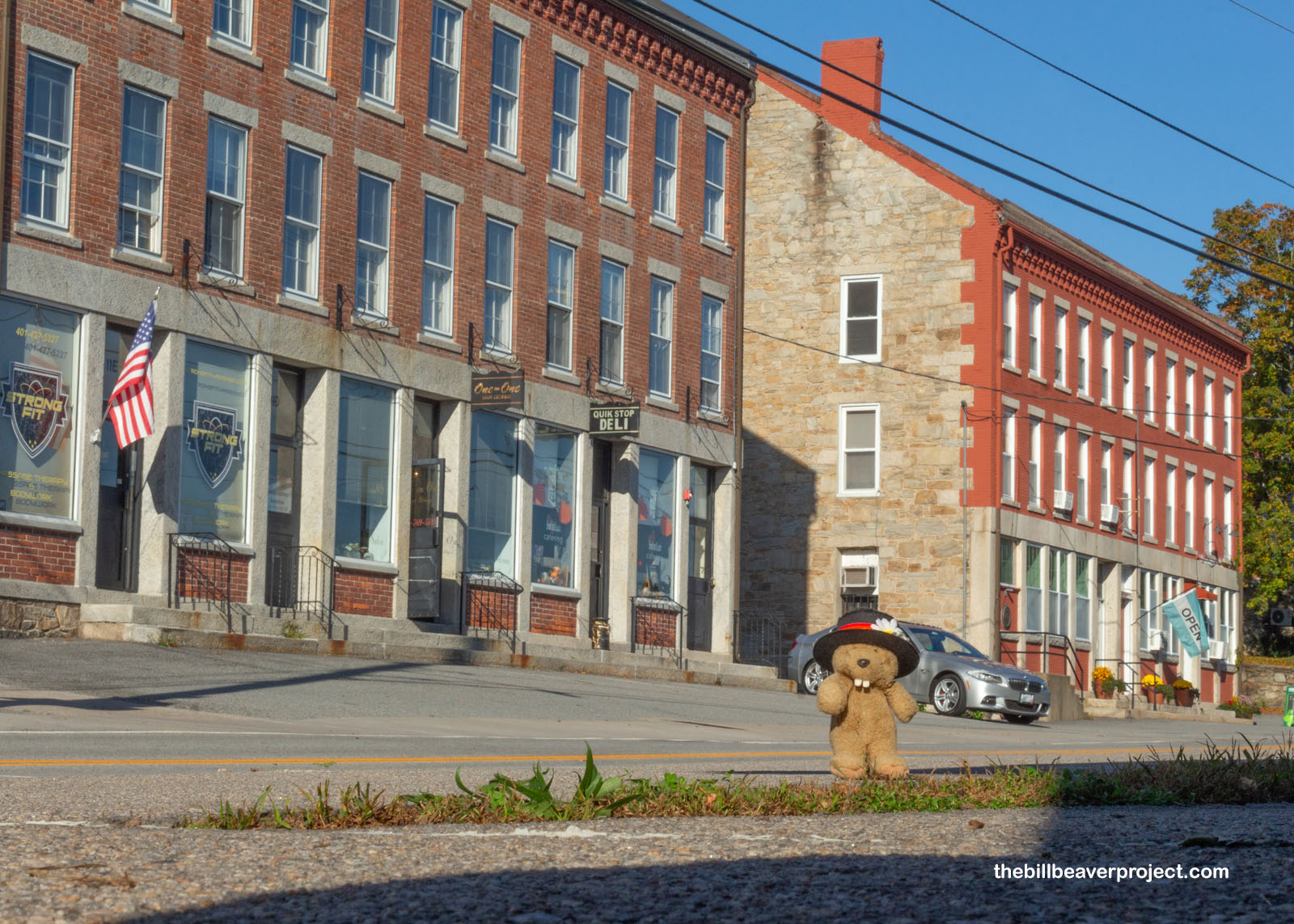 |
From Slatersville, I headed further up the Blackstone and out of Rhode Island altogether! I’d forgotten how tiny the state was! The next stop on the river tour was Whitinsville, where I wandered through several places I probably wasn’t supposed to, and observed the mill of John C. Whitin. He’d risen to the top of a partnership with his brother and dad to create the Whitin Machine Works, the largest textile machine shop in the entire world! Though his estate is now a public park, Mr. Whitin was once the boss and civic leader of over 5,000 workers!
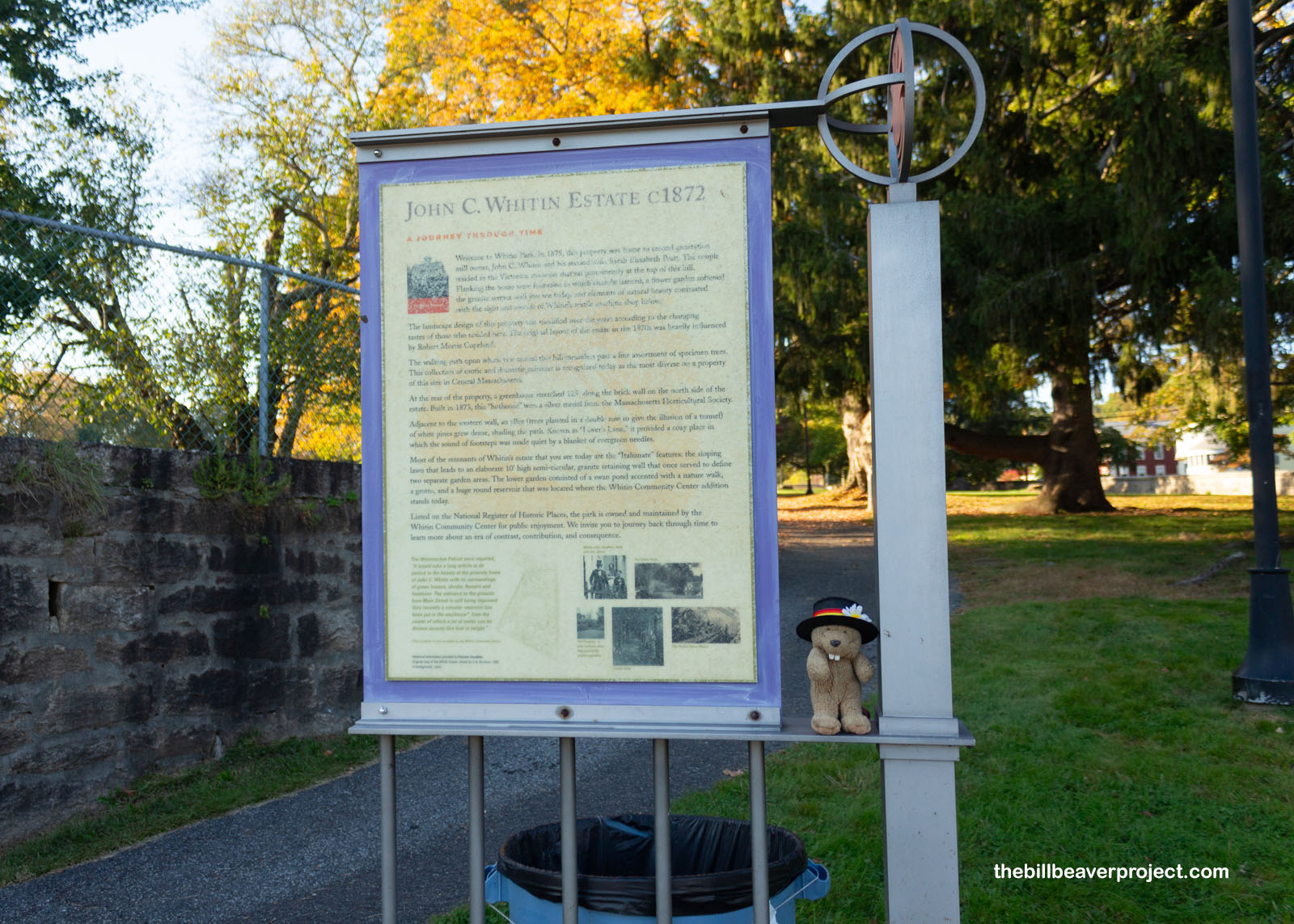 |
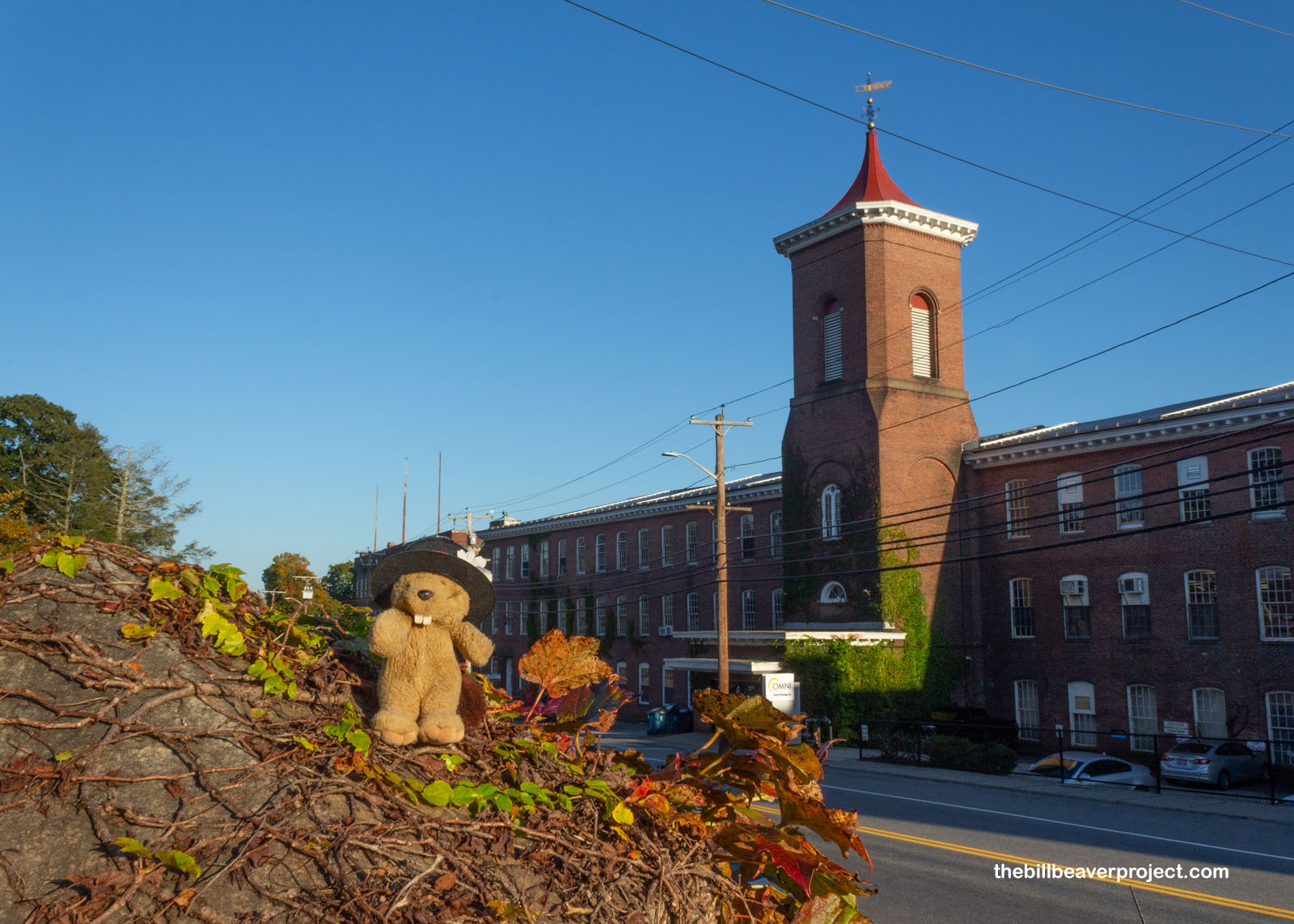 |
With a crescendo like that, I had to ease things up a bit in the last few hours of daylight. My final Blackstone stop was the town of Hopedale, where the only surviving structure of its milling days is a museum called the Little Red Shop. It was here that George and Ebenezer Draper manufactured loom temples, a device that gave weavers better control and made their process more efficient. Like the Whitins, the Drapers were manufacturers for manufacturers!
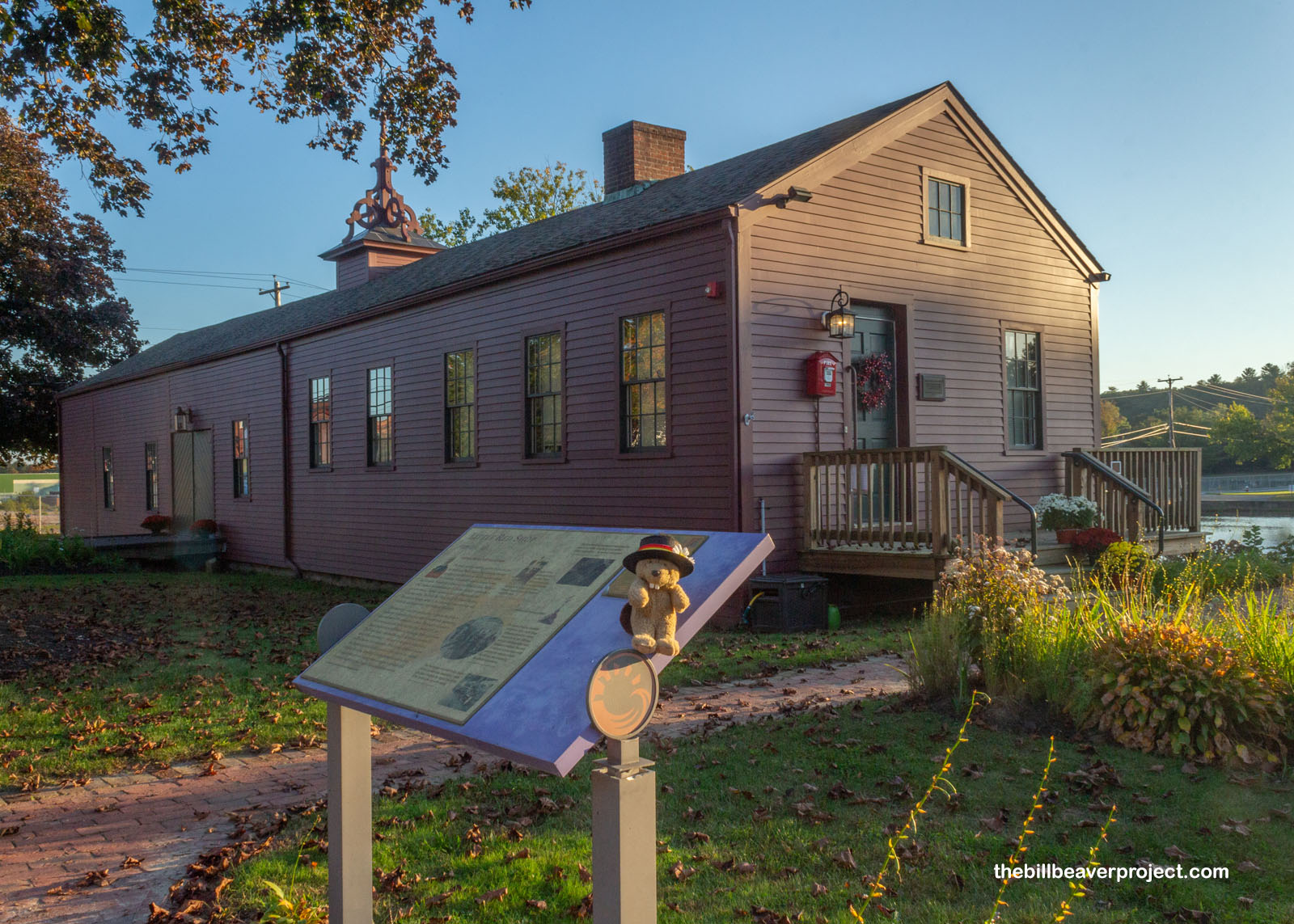 |
Hopedale wasn’t founded as a mill town, though! In fact, it got its start in 1842 as a religious commune led by Reverend Adin Ballou! Here, Community members made a pledge of equality between men and women, abolition of slavery, voting rights, and temperance, with an emphasis on education! However, they were eventually swallowed up in 1856 when the Drapers, longtime Community members, withdrew their investments and turned this religious village into the nation’s top loom manufacturing town, which lasted until 1978!
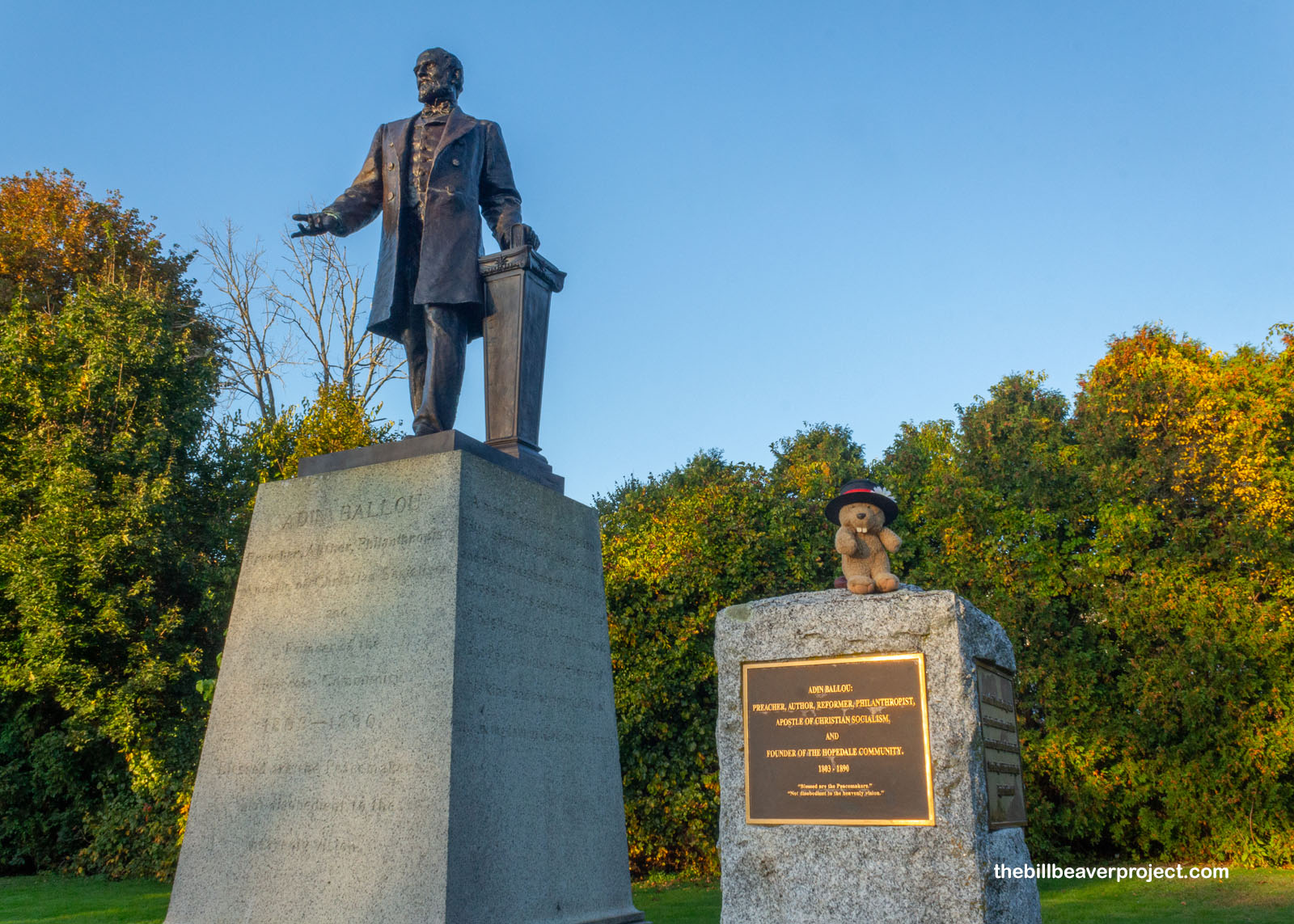 |
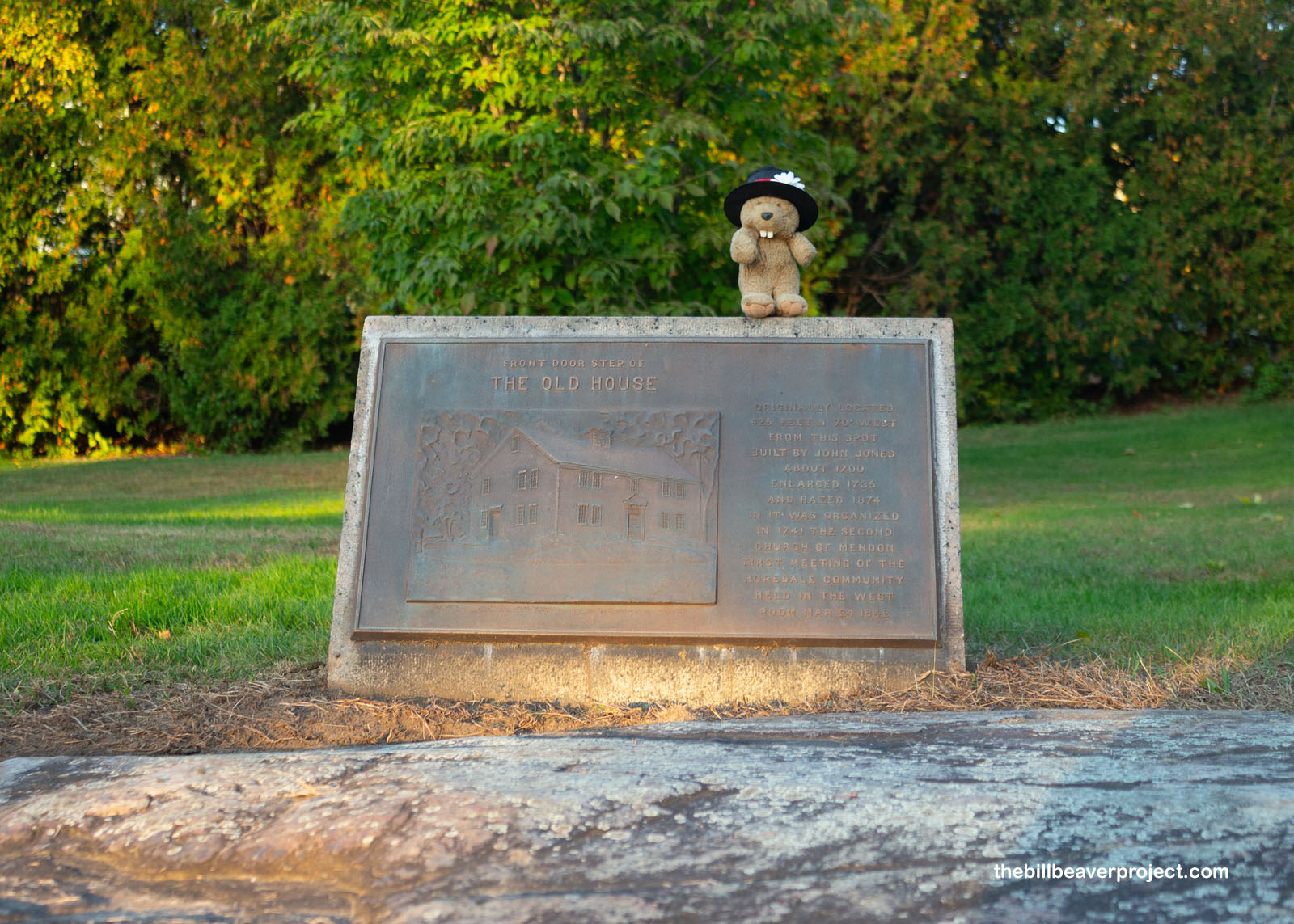 |
Only one person voted against the Drapers dissolving Hopedale, and that was Joseph Bancroft. Though he eventually found his place in the Drapers’ company town, his is a legacy of learning with the Bancroft Memorial Library. This historic library houses the portraits of Hopedale’s founders, as well as Reverend Ballou’s writing desk!
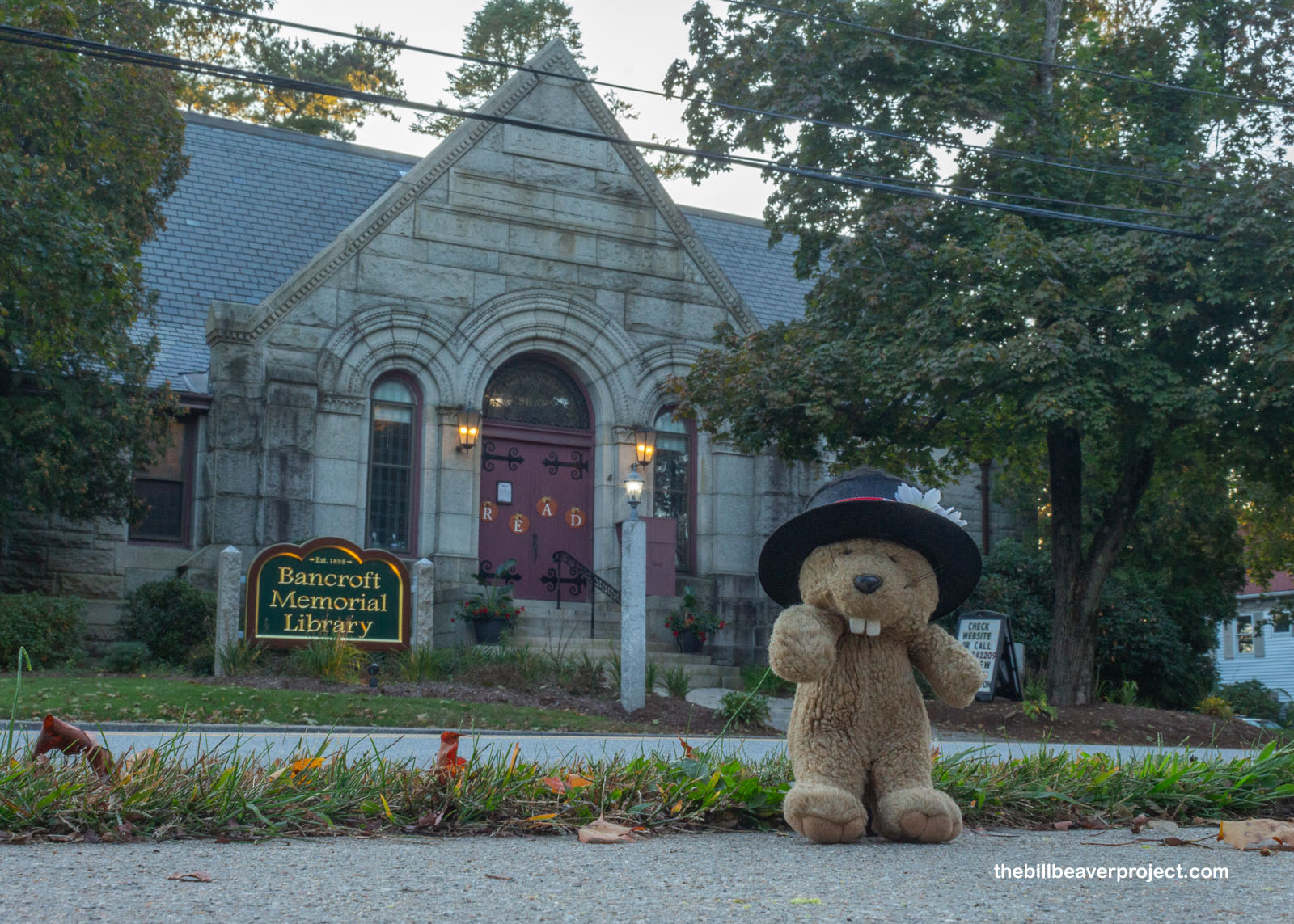 |
And just like that, the sun set, and the sky started to pick up more in common with the river. It was amazing to think that, less than 50 years ago, this whole river was clanking with factory machines, but on this evening, it was pretty darn serene! Now that industry has shifted away from this area, and folks are giving more attention to keeping water clean, I’m encouraged that, maybe within my lifetime, what’s under the surface of the Blackstone River will match the tranquility above it!
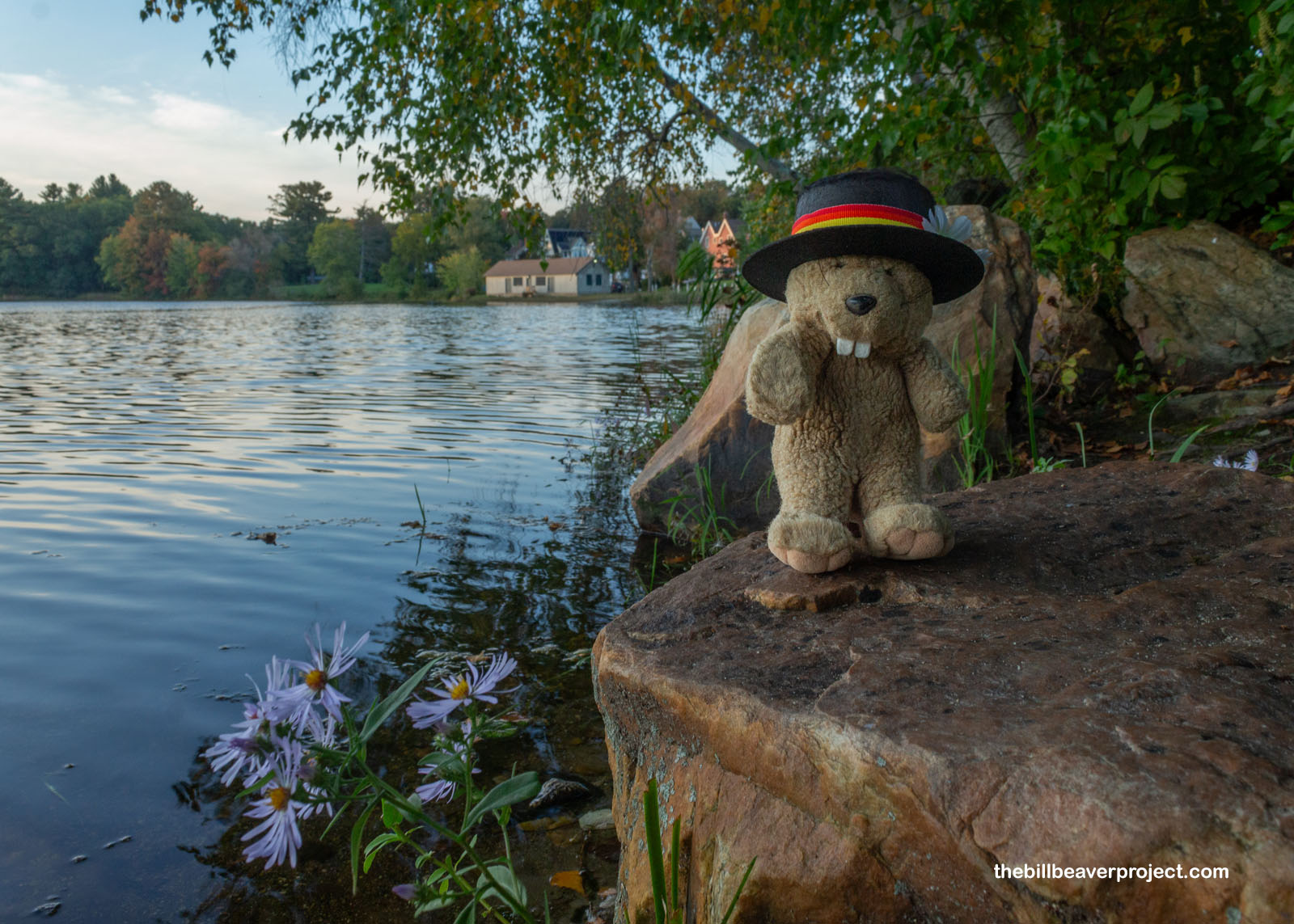 |
And whew! I had one day in Rhode Island, and I couldn’t even fill up a whole day with it! No matter, it was nice getting a little head start on my way back to the AirBNB. New England being as close as it is makes it easy to hub out of one spot, but tomorrow will be my longest drive on this trip! Even so, three hours into western Connecticut should be a breeze, weather permitting!
We’ll connect there later!

 Previous Day |
Total Ground Covered: 424.8 mi (683.7 km) |
 Next Day |
